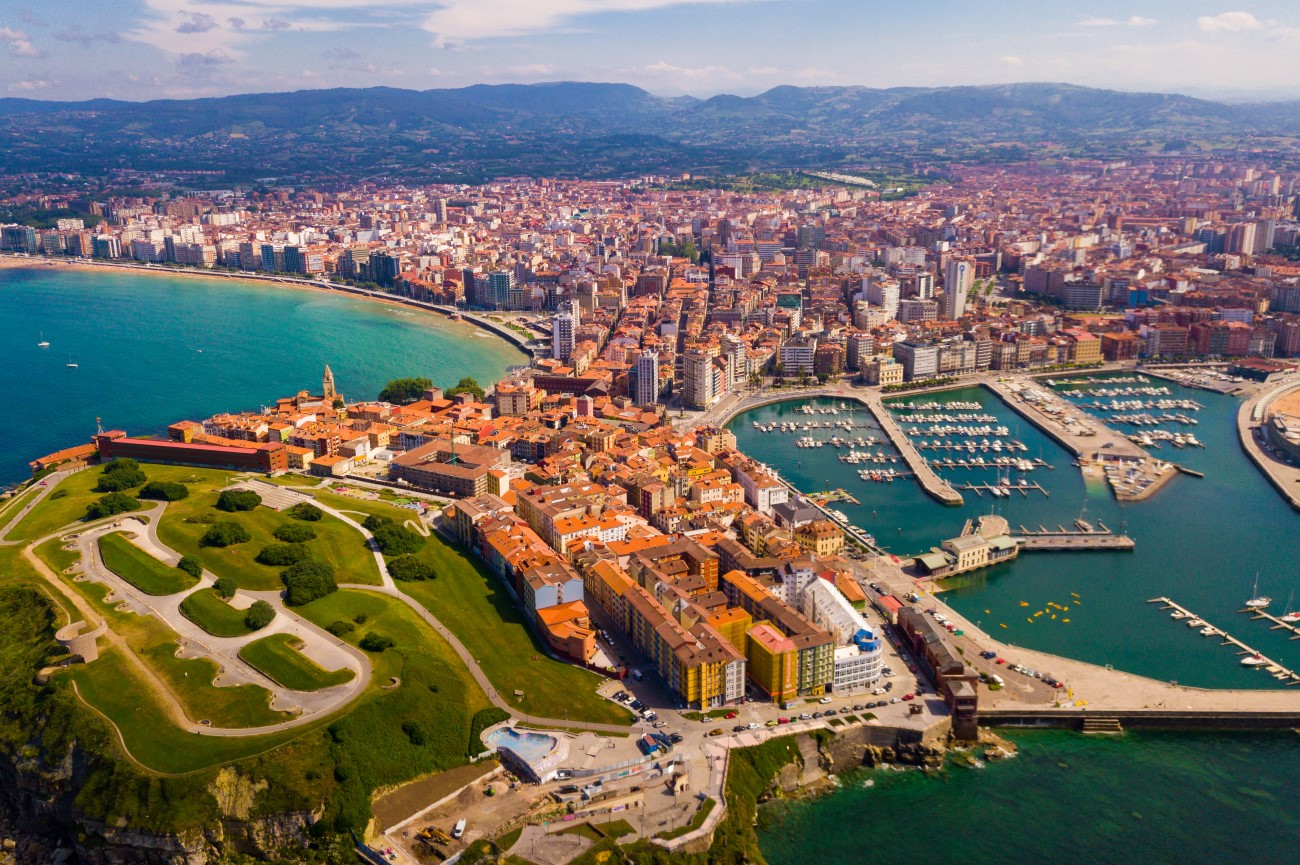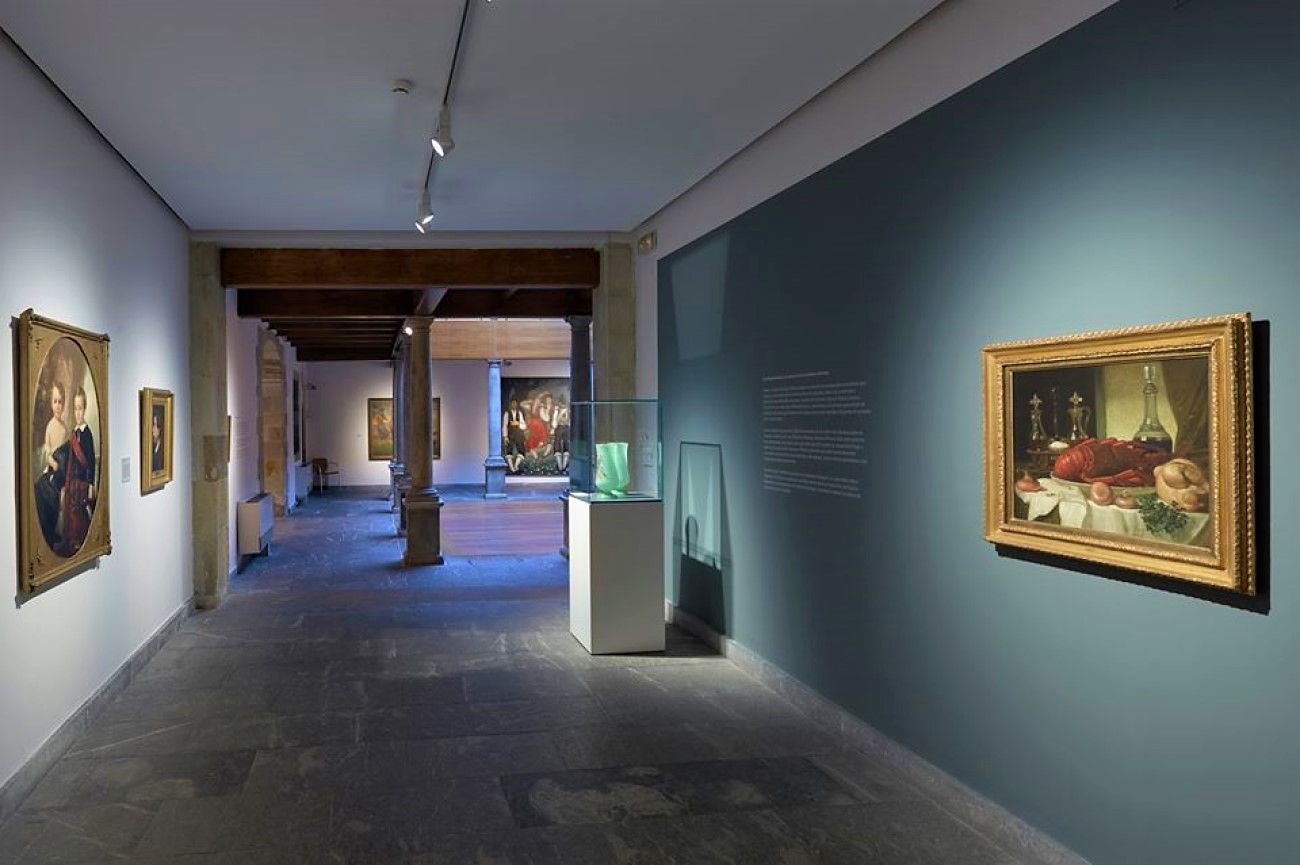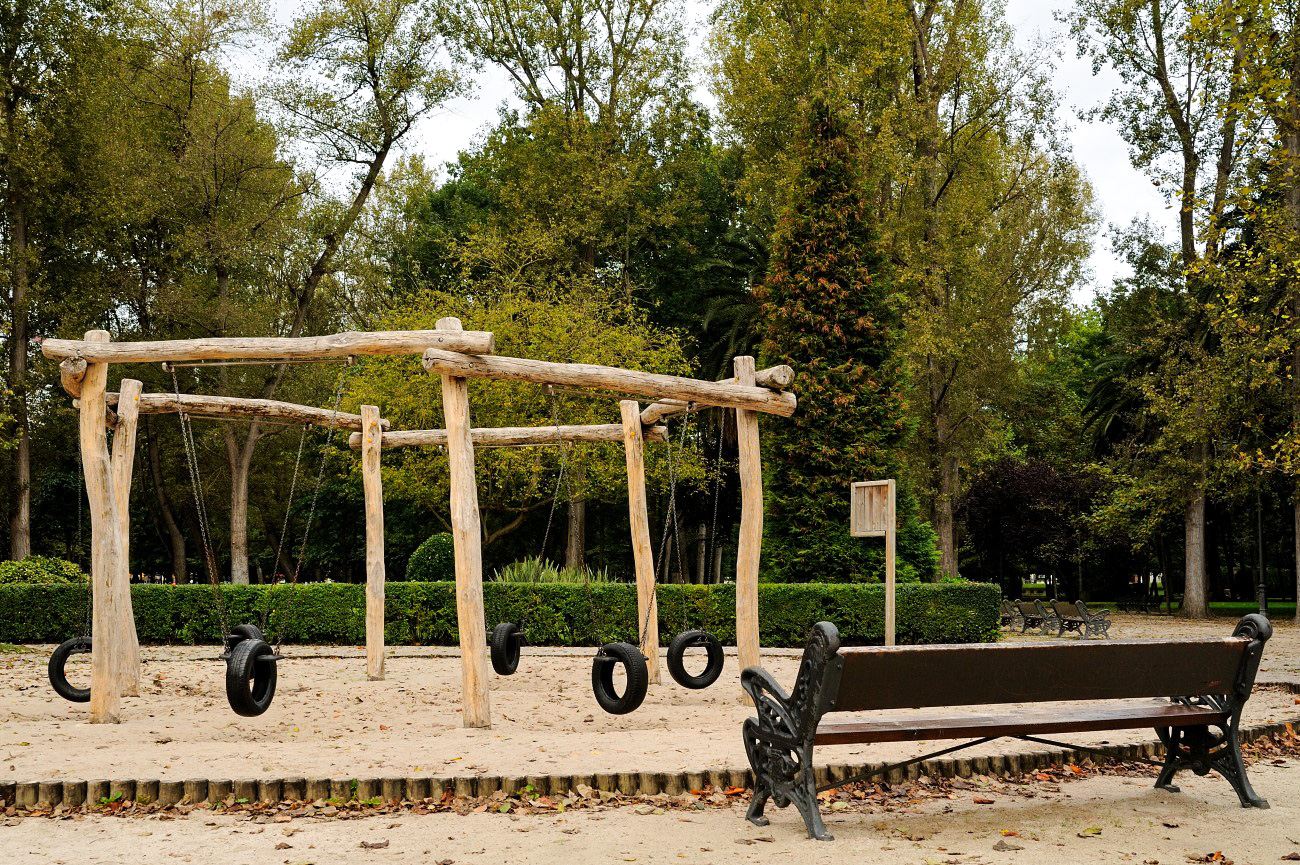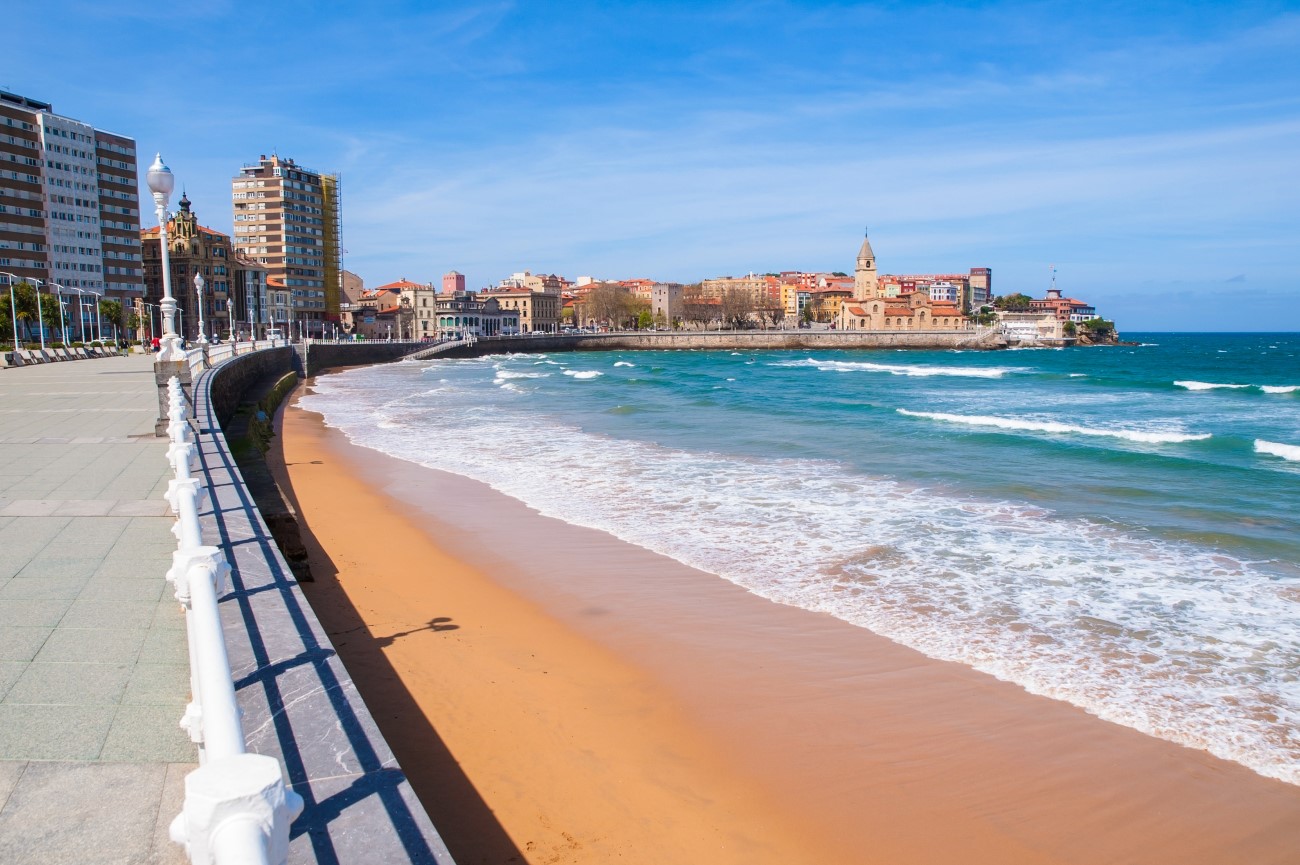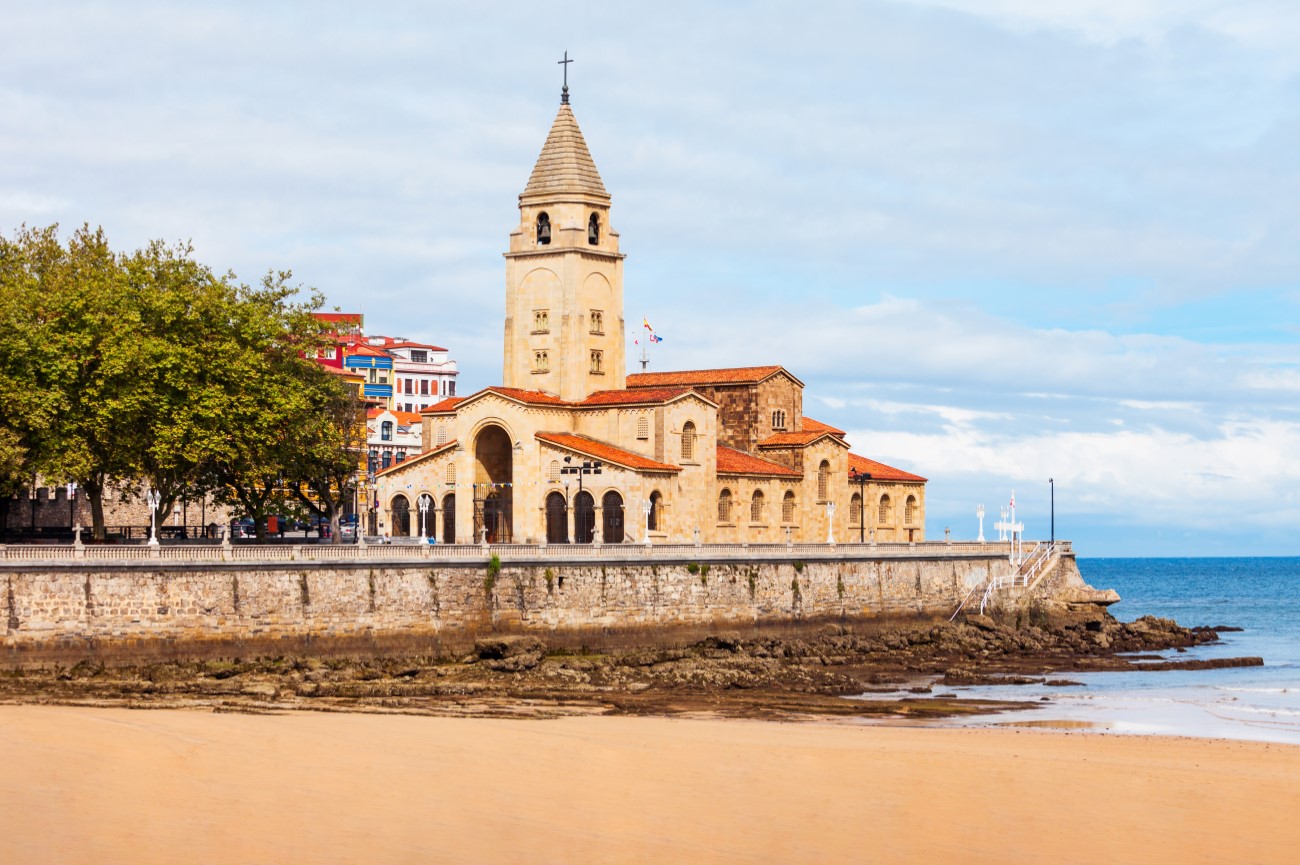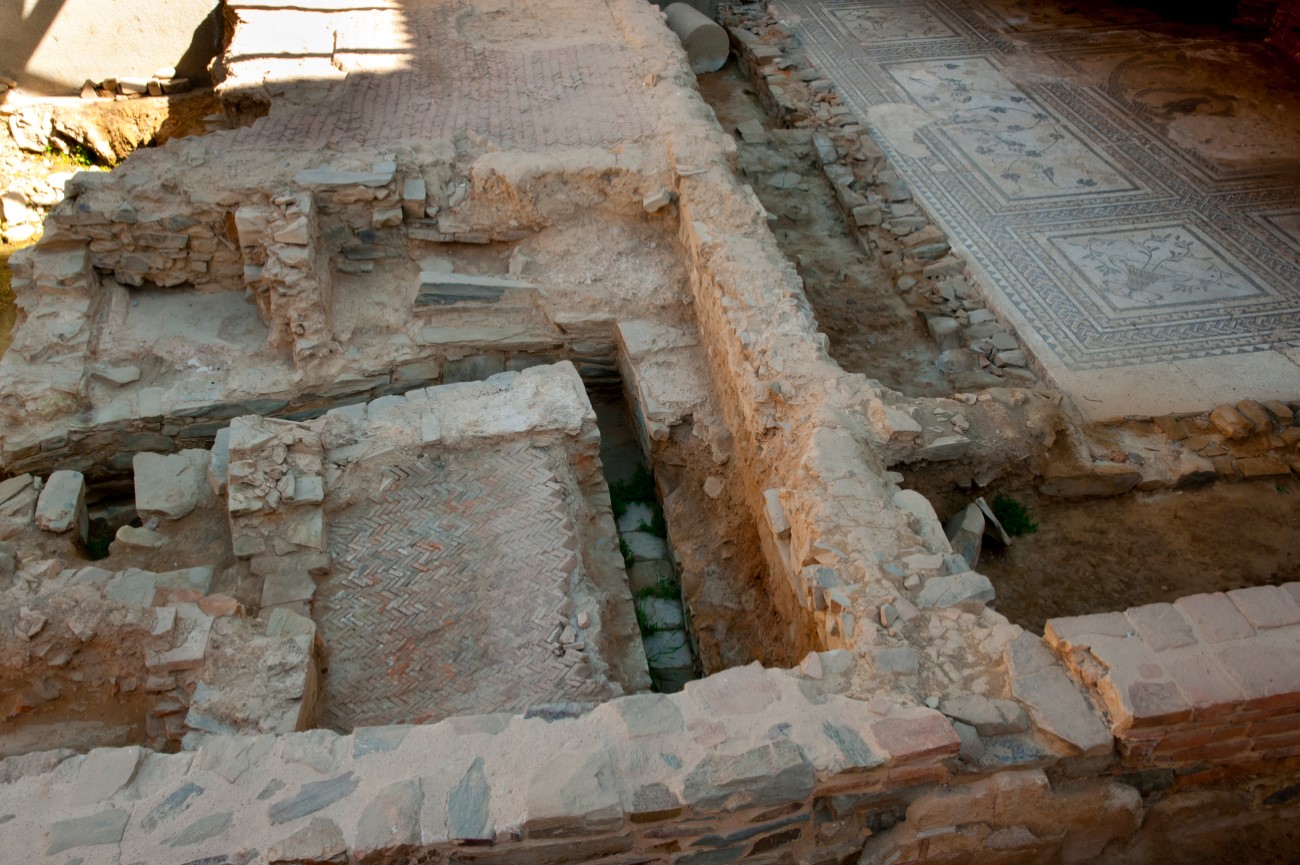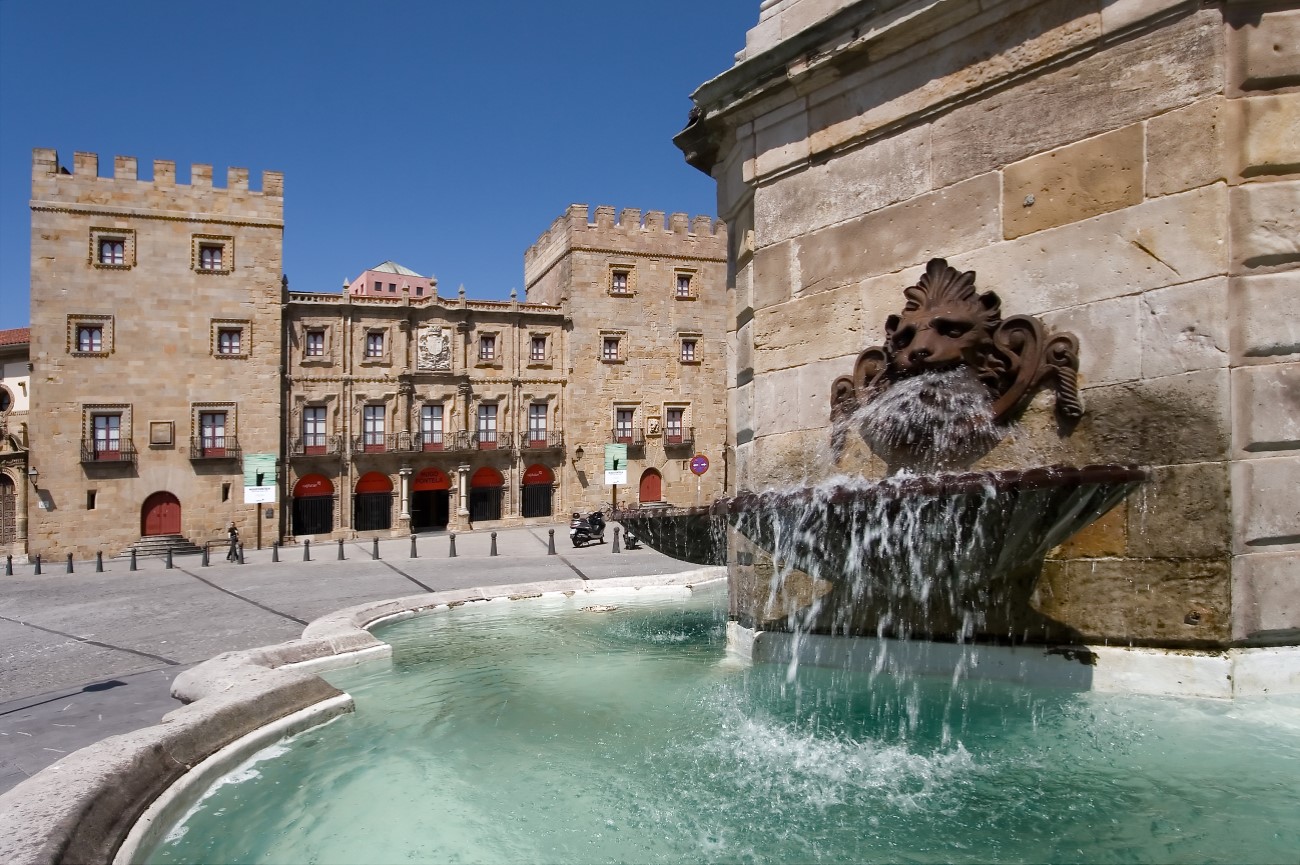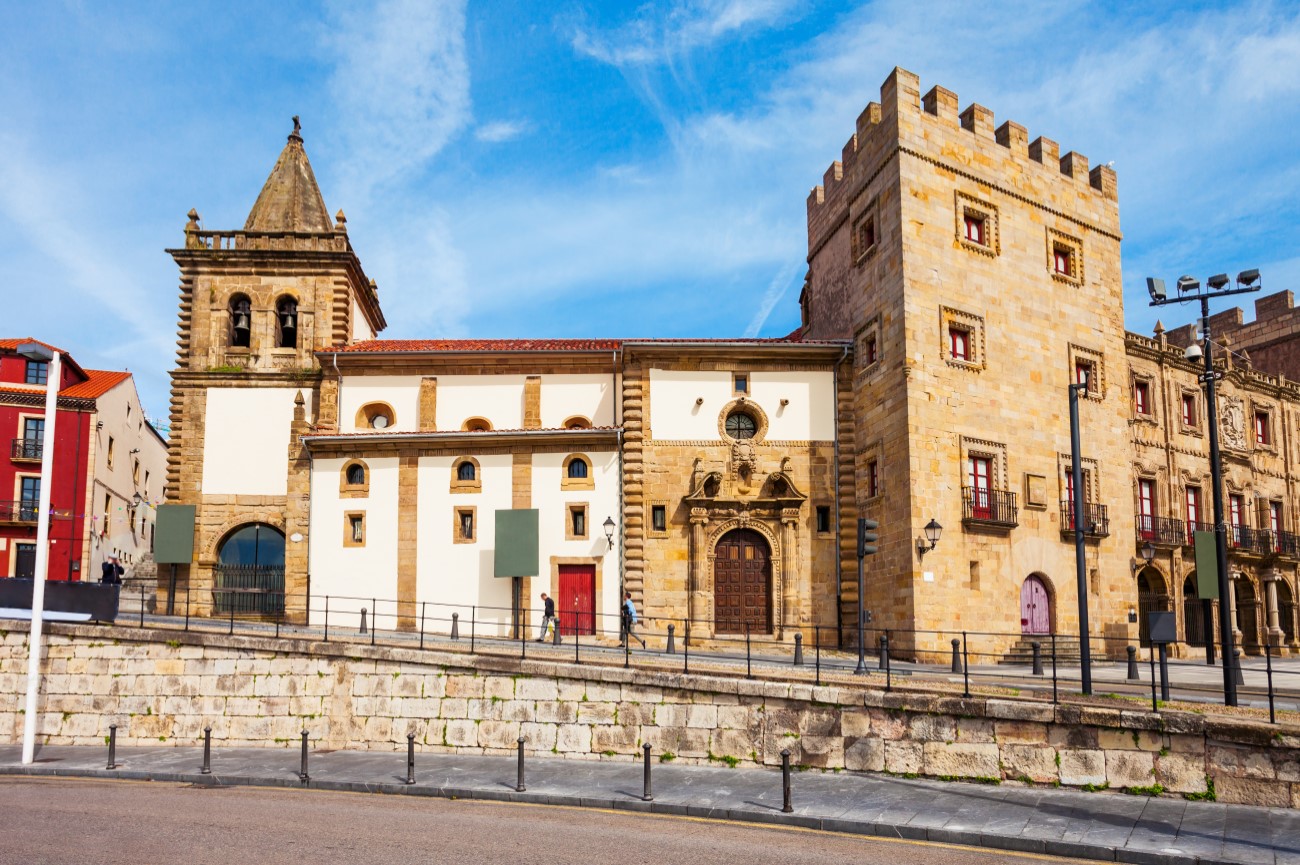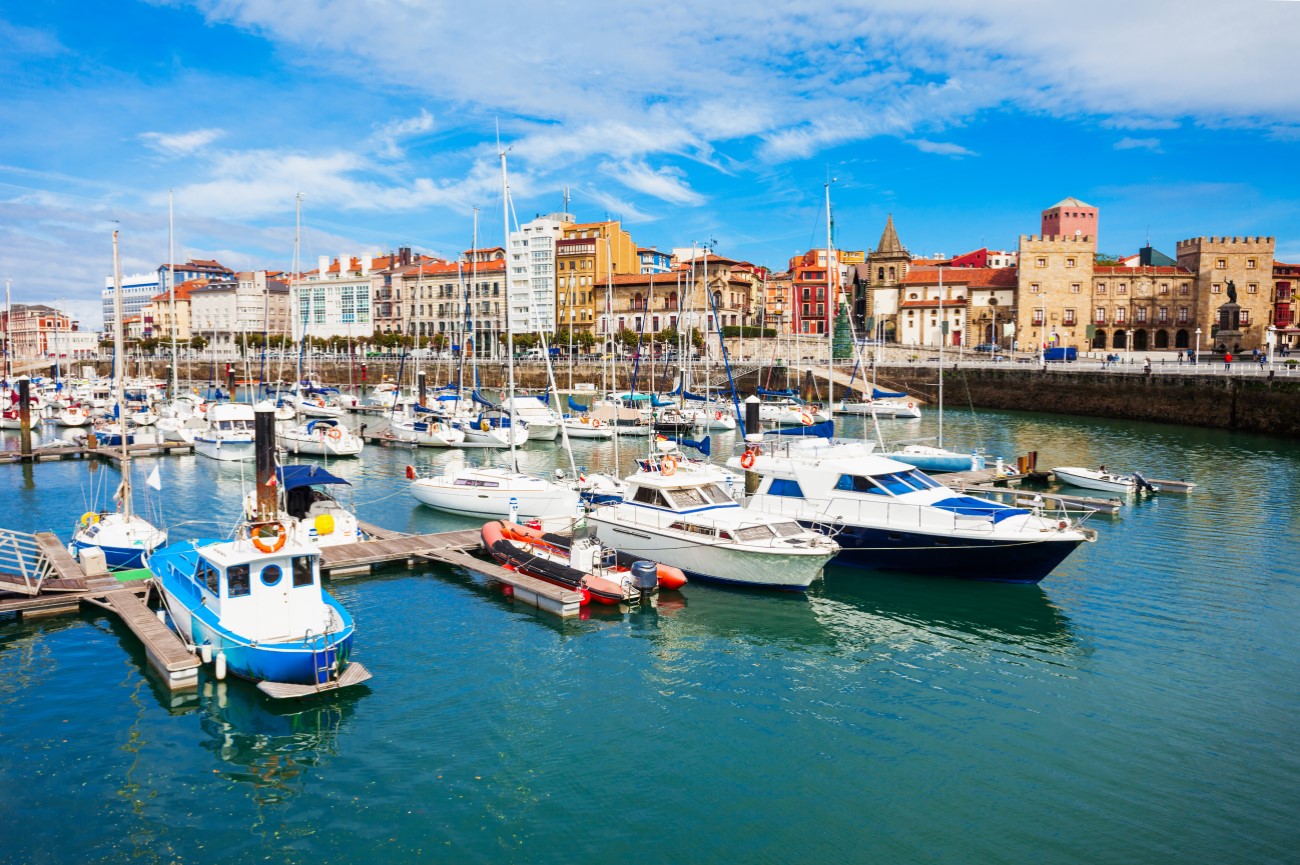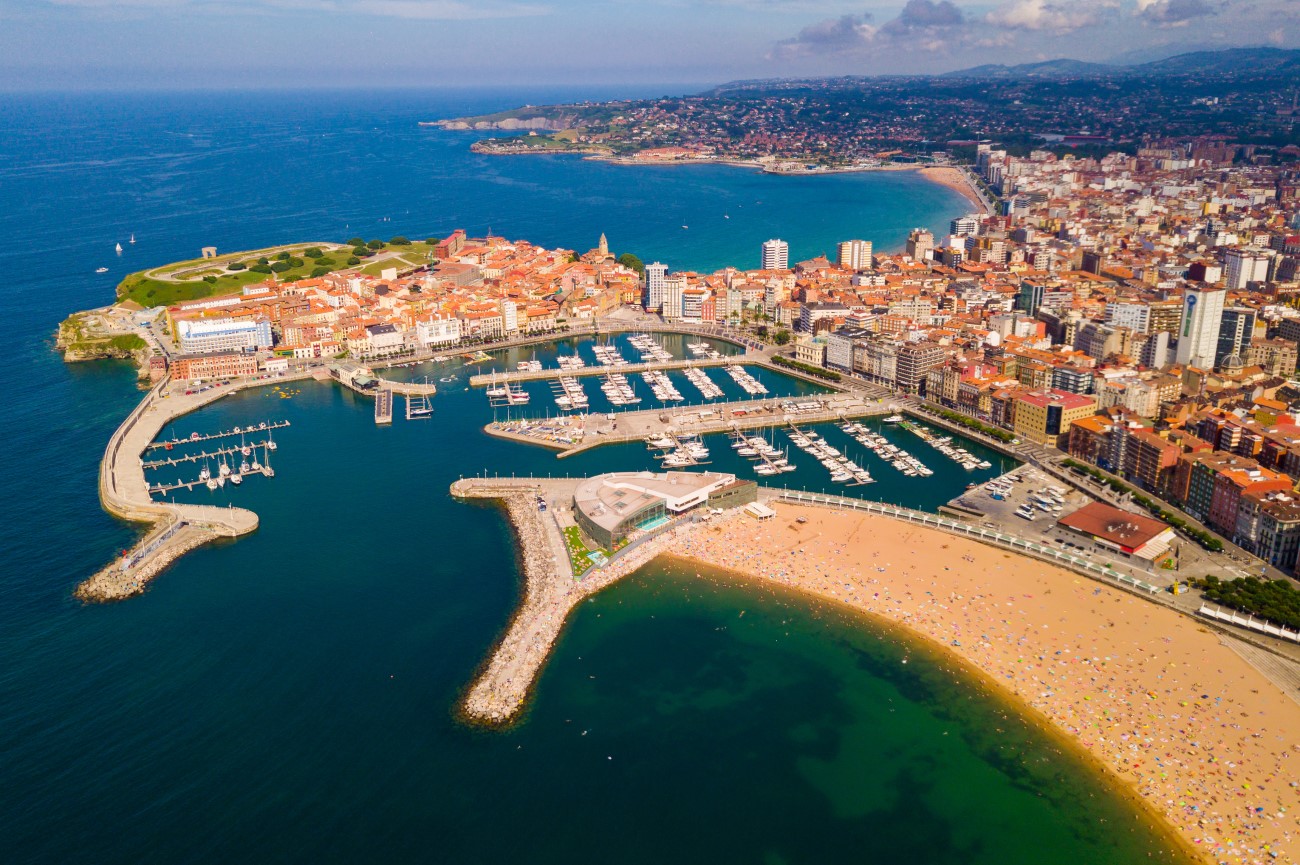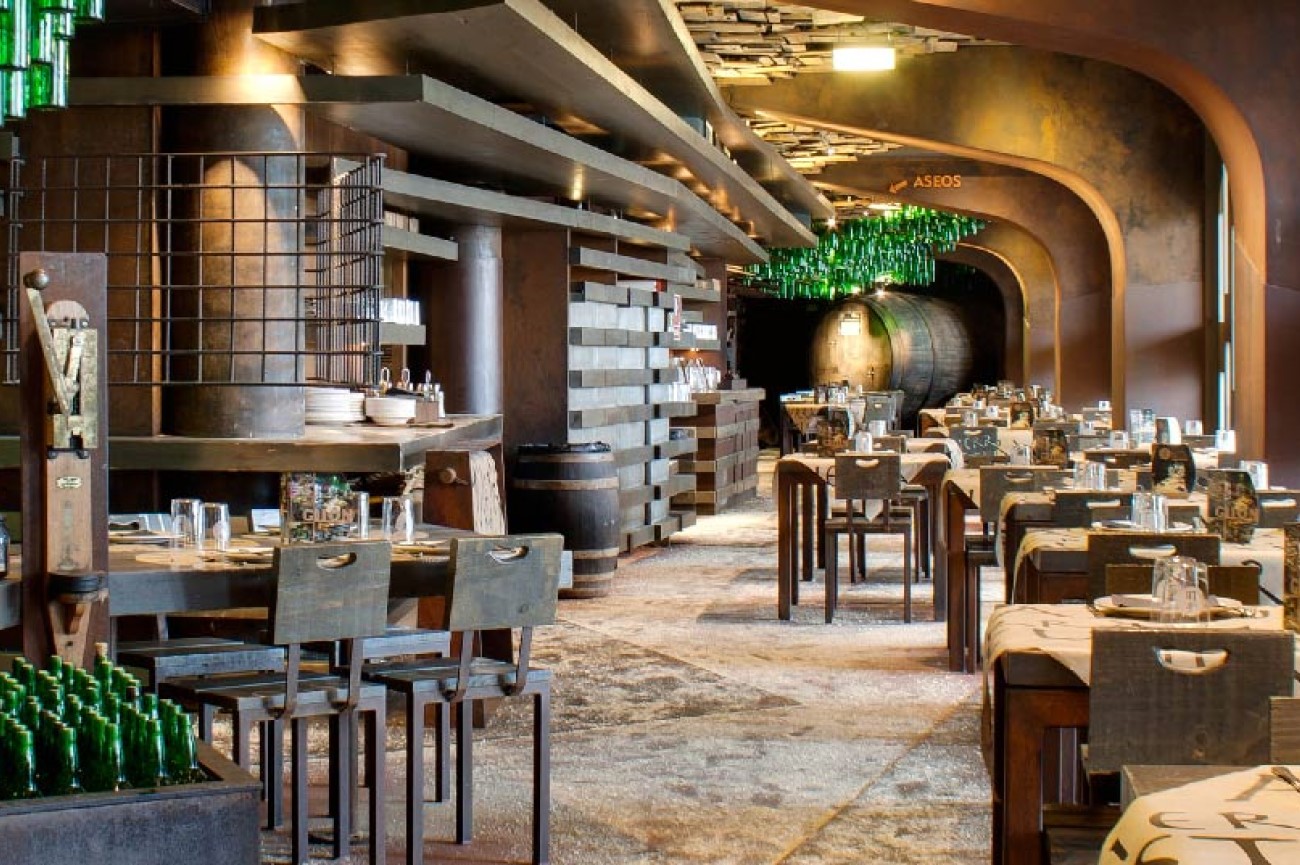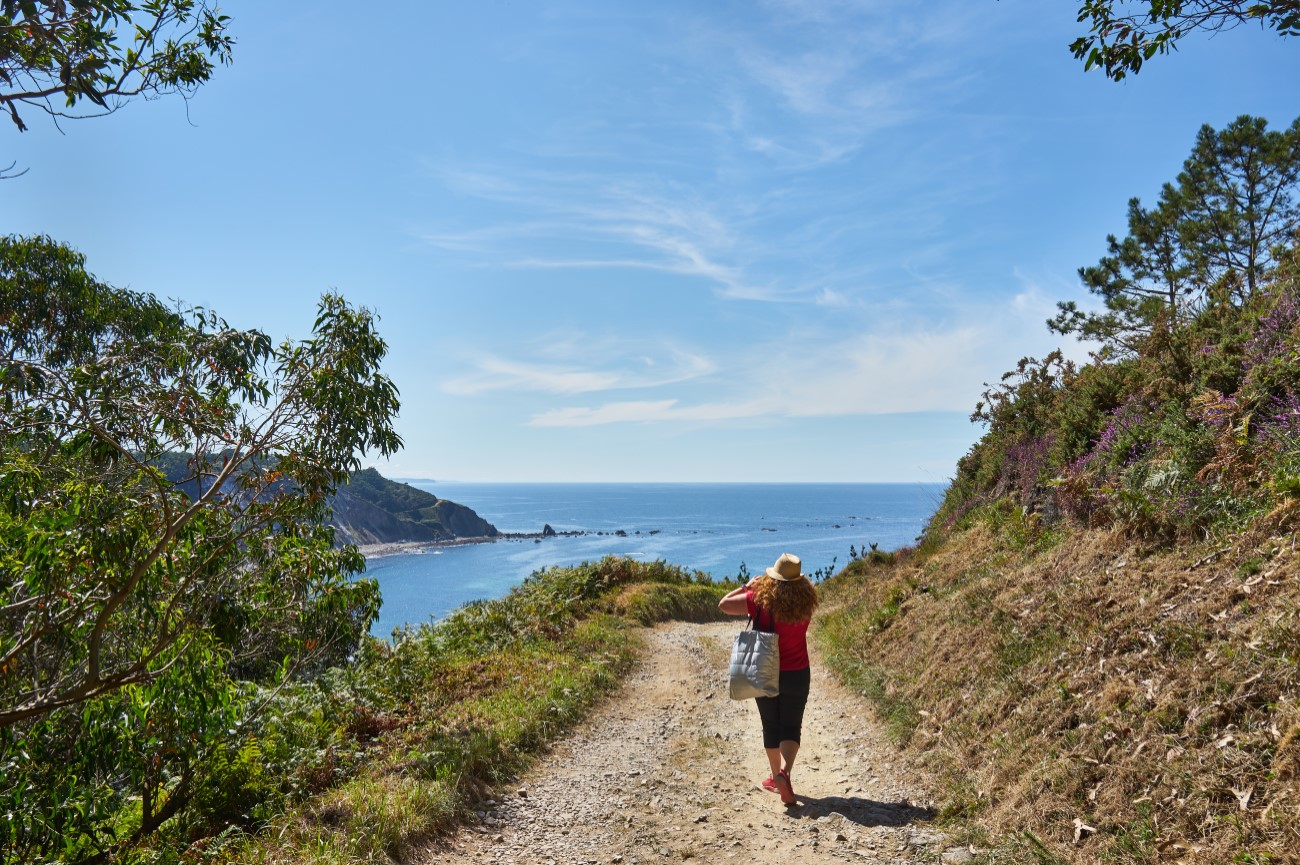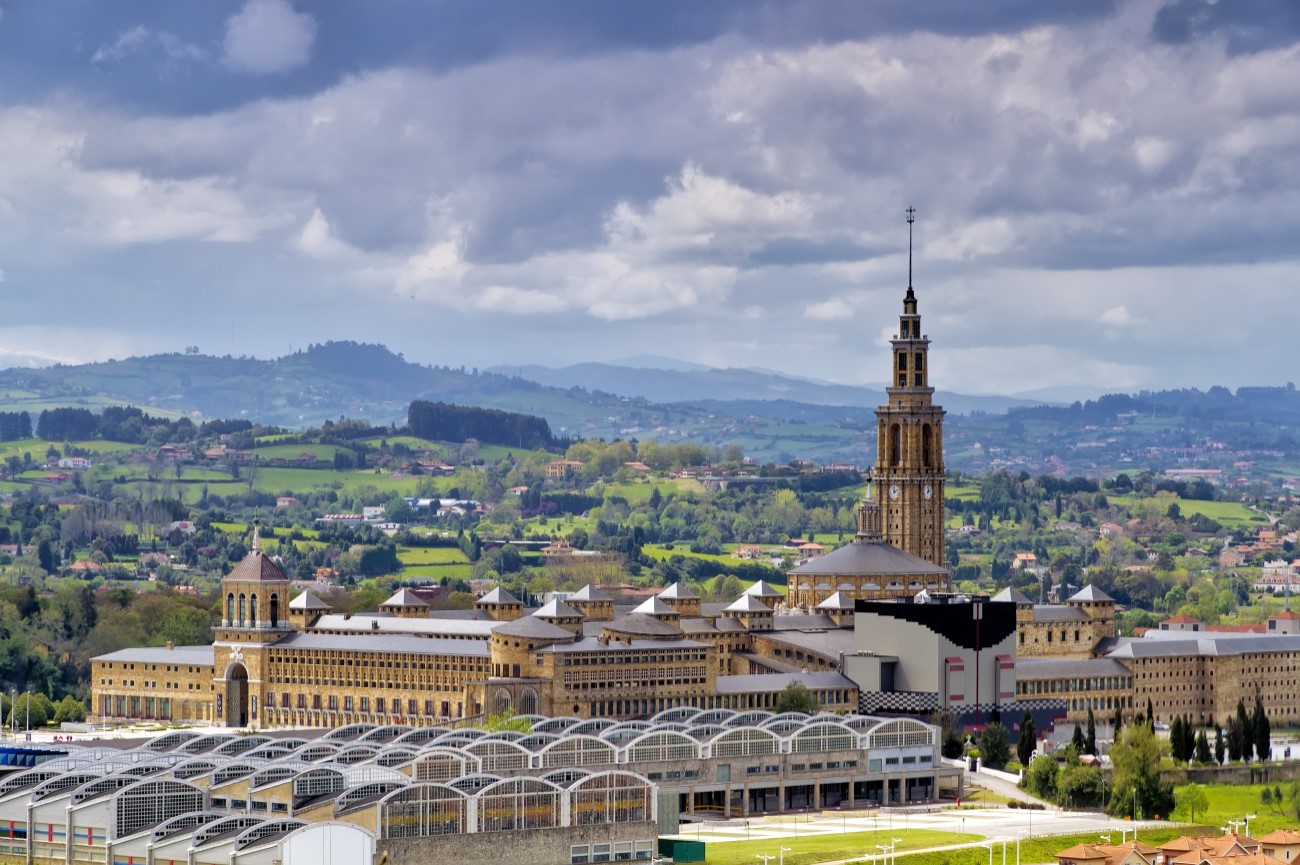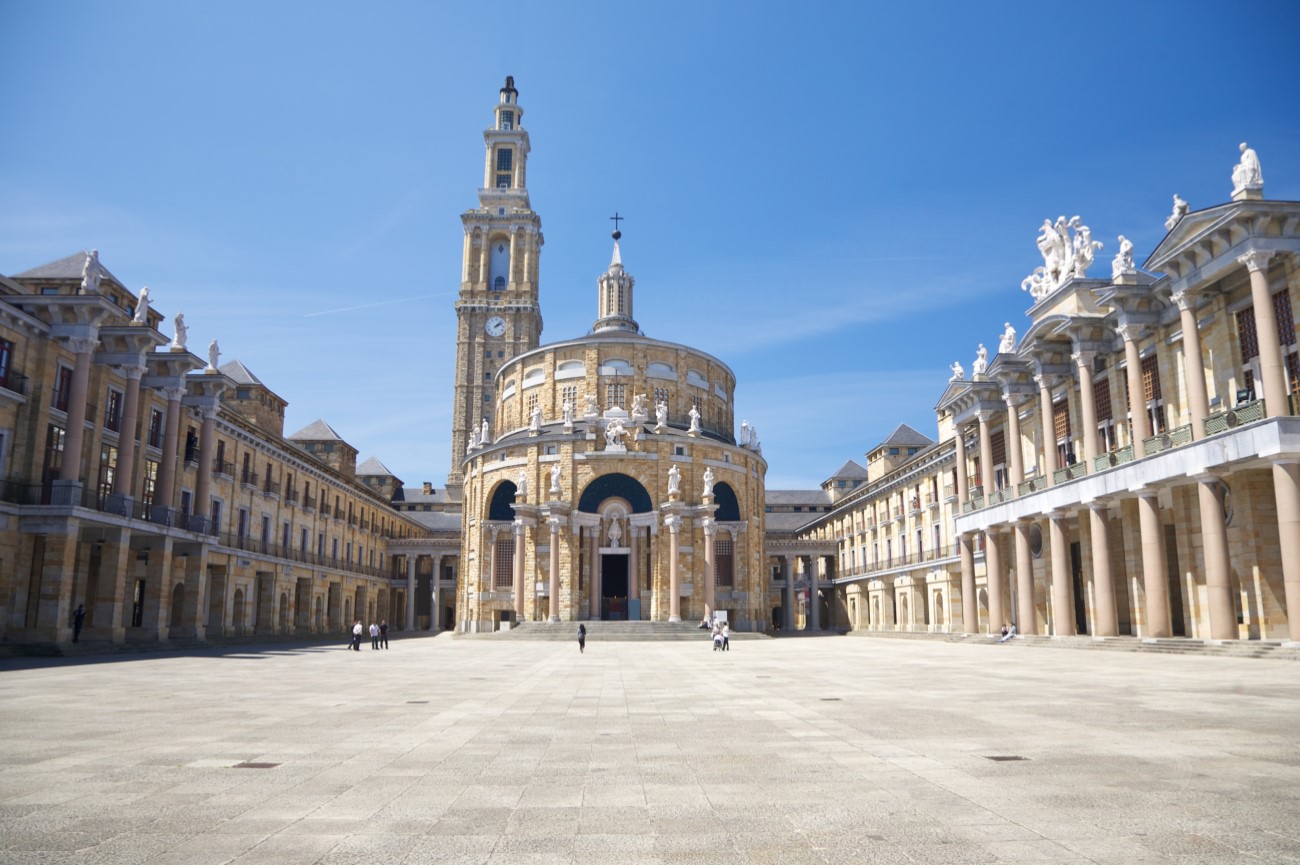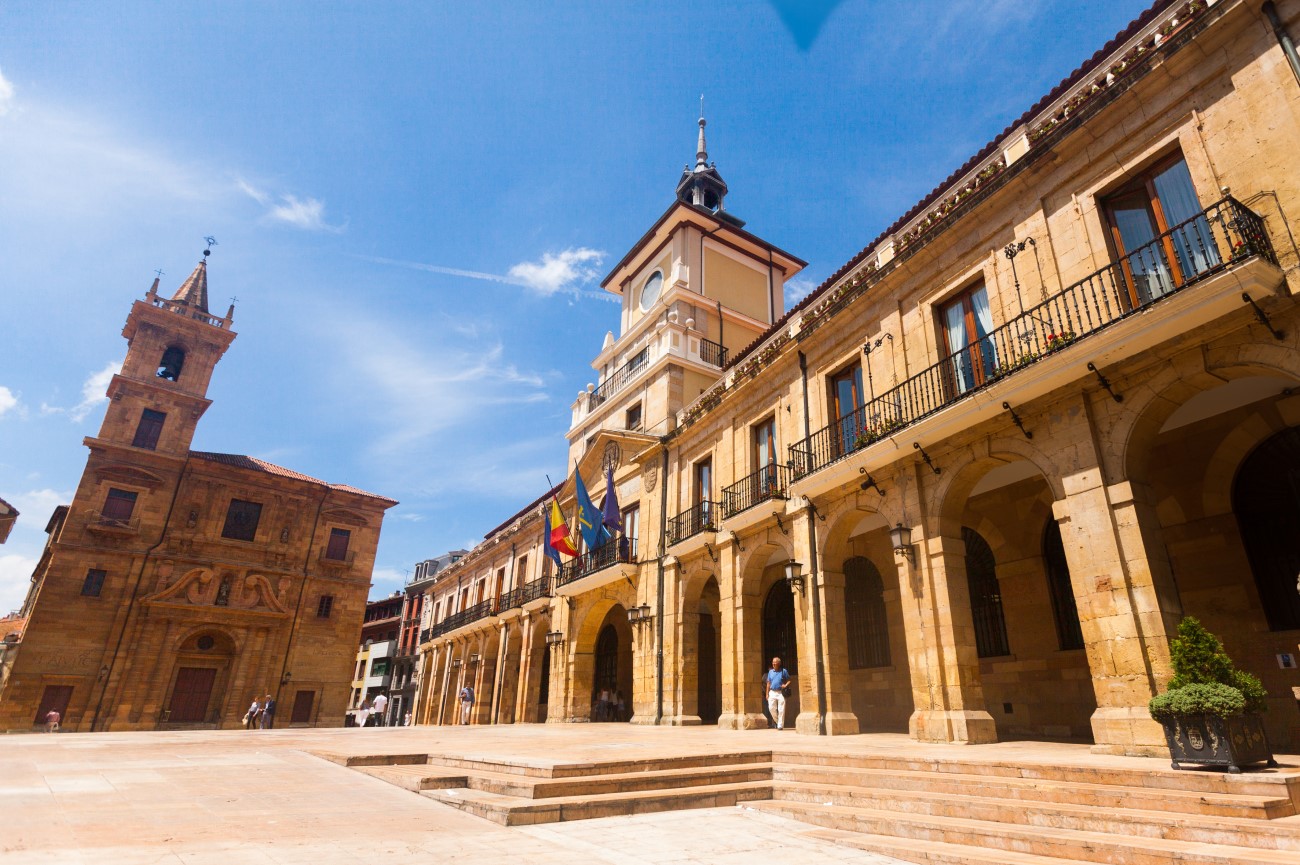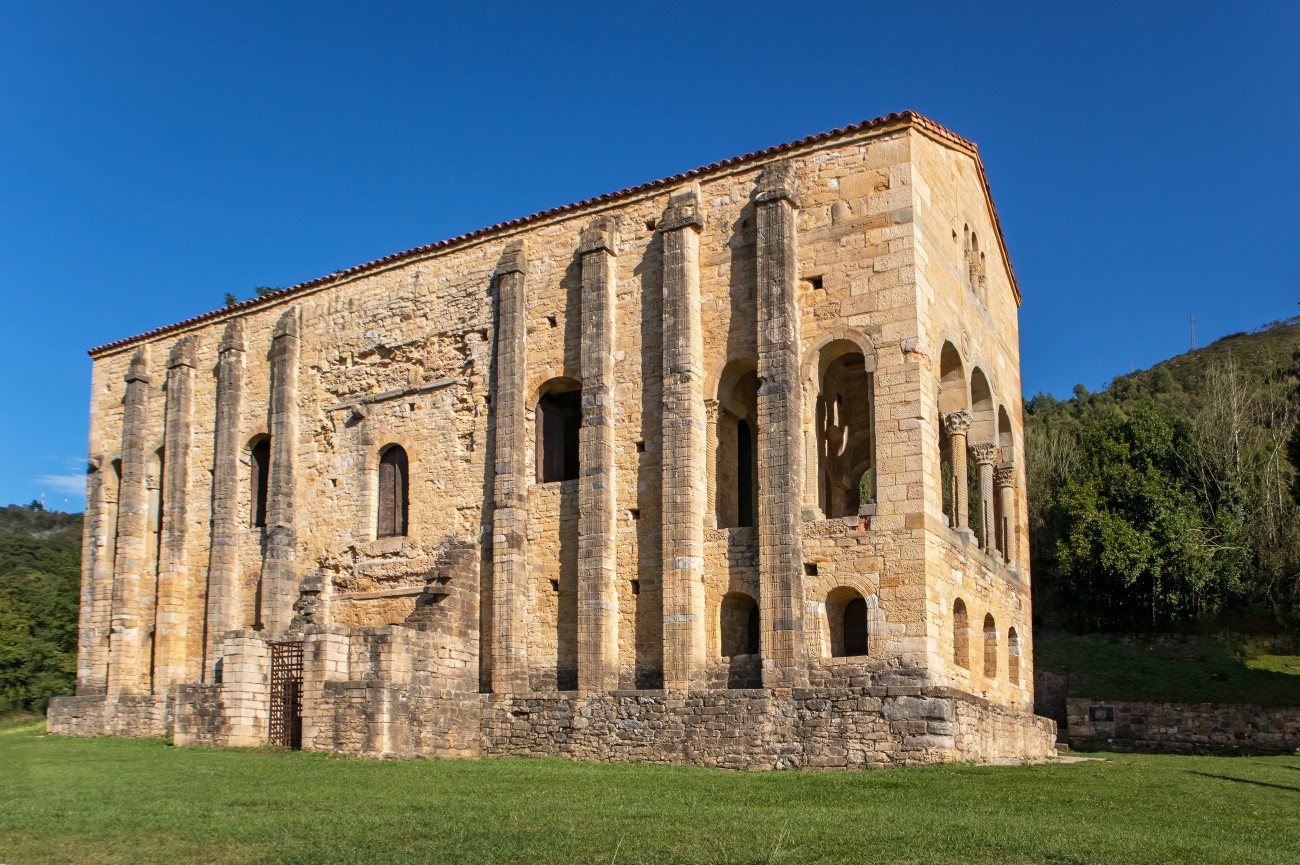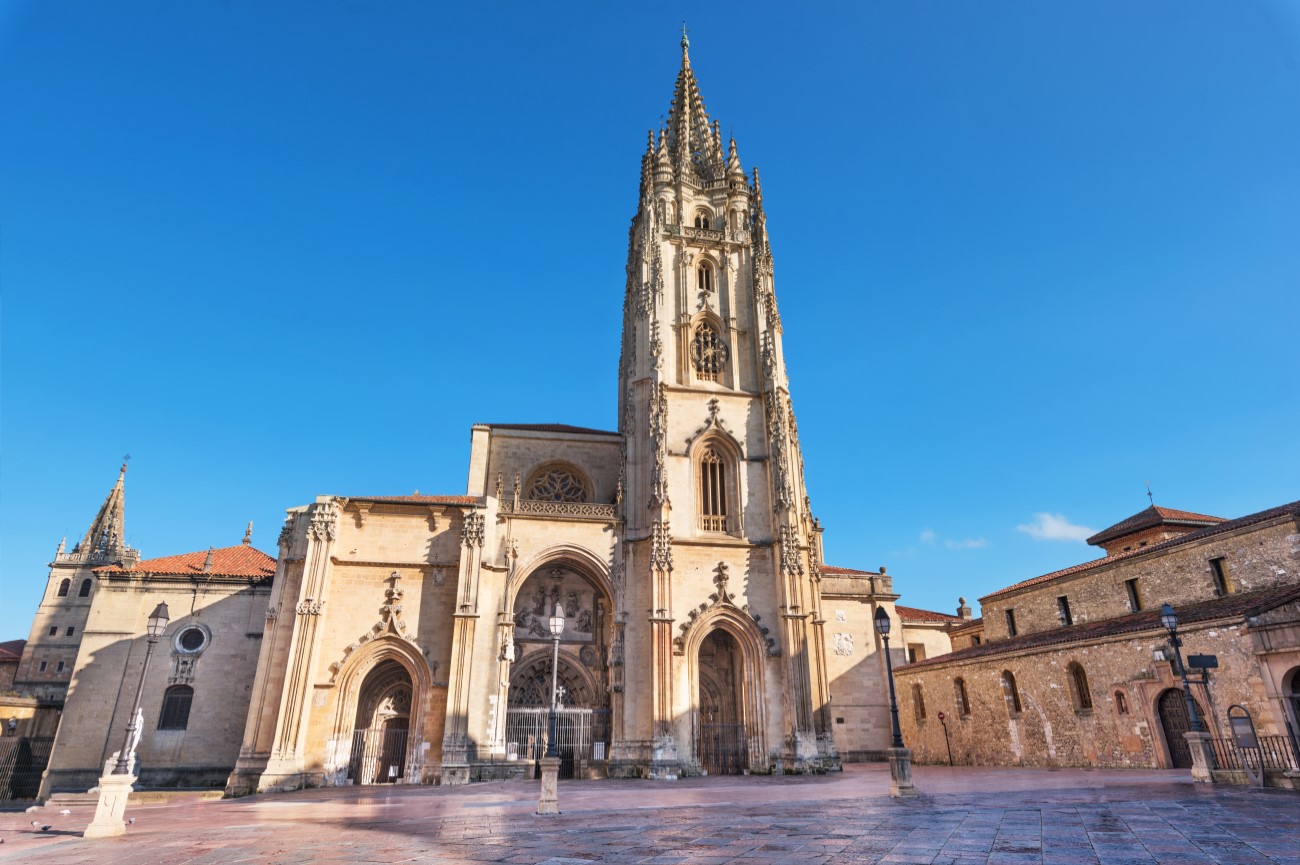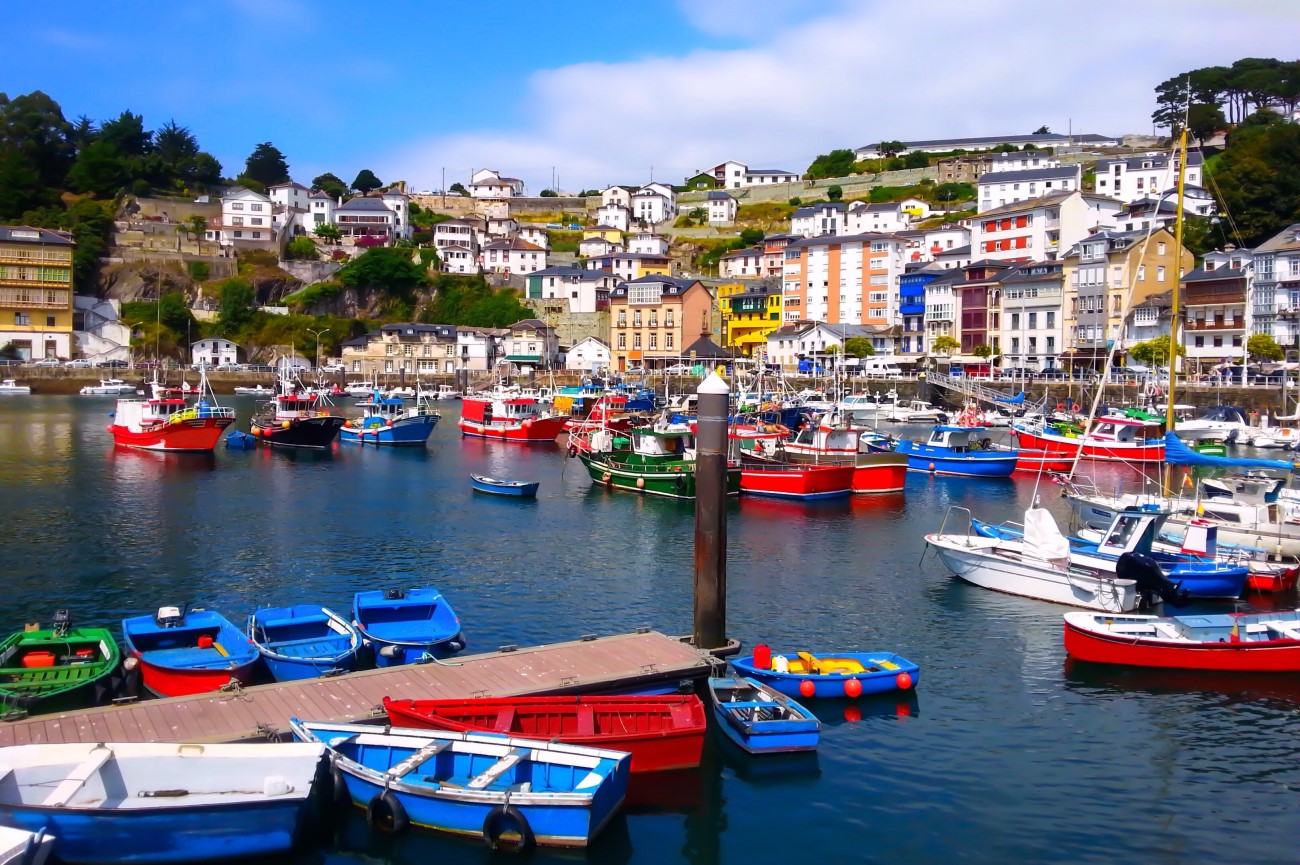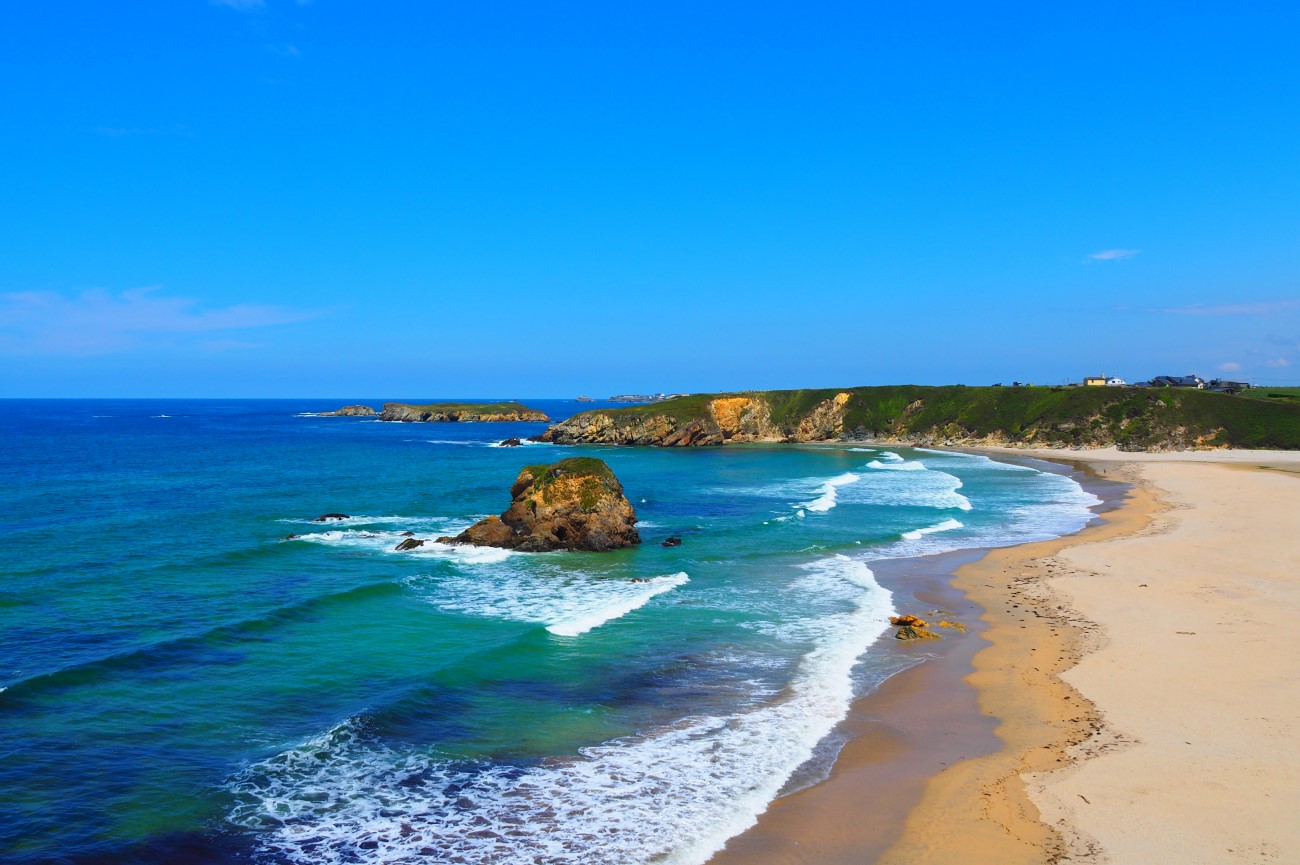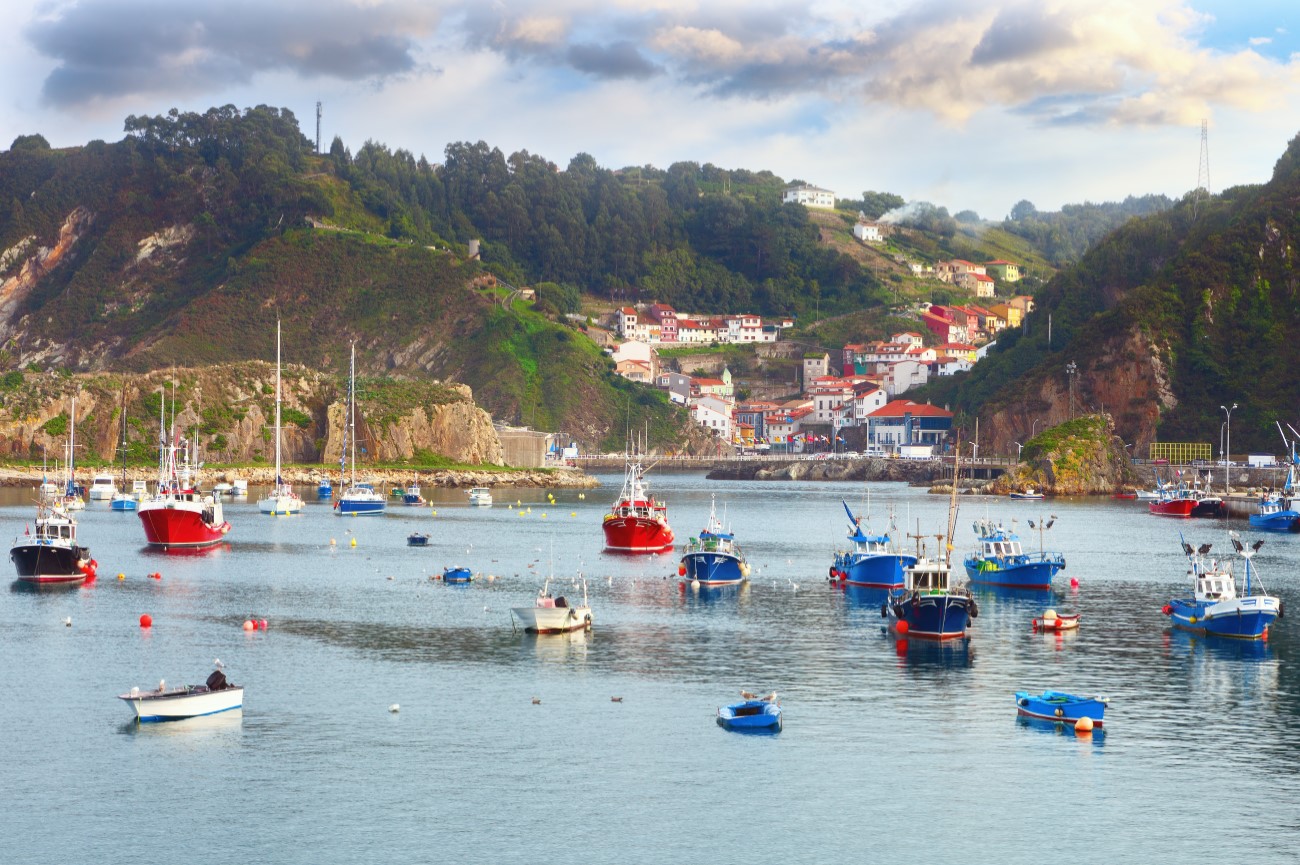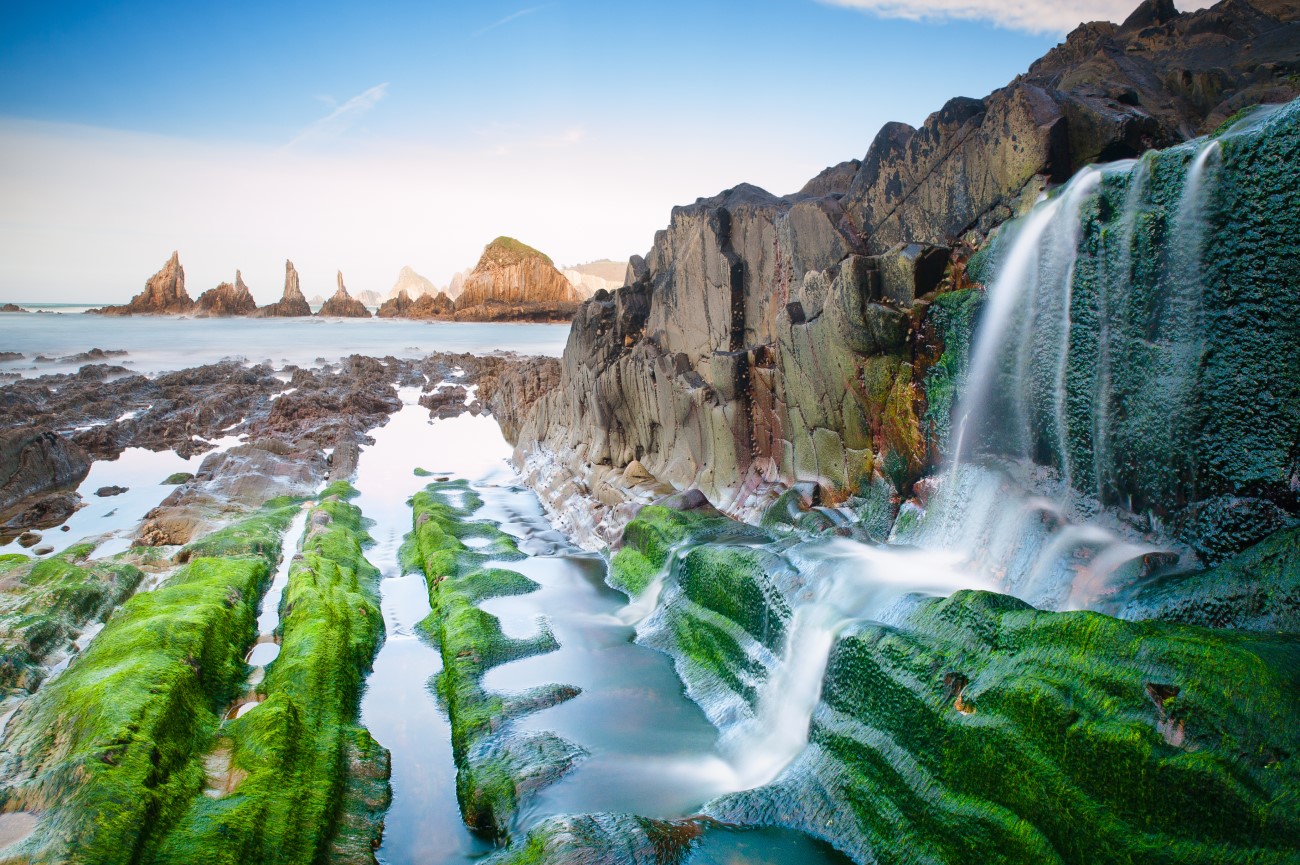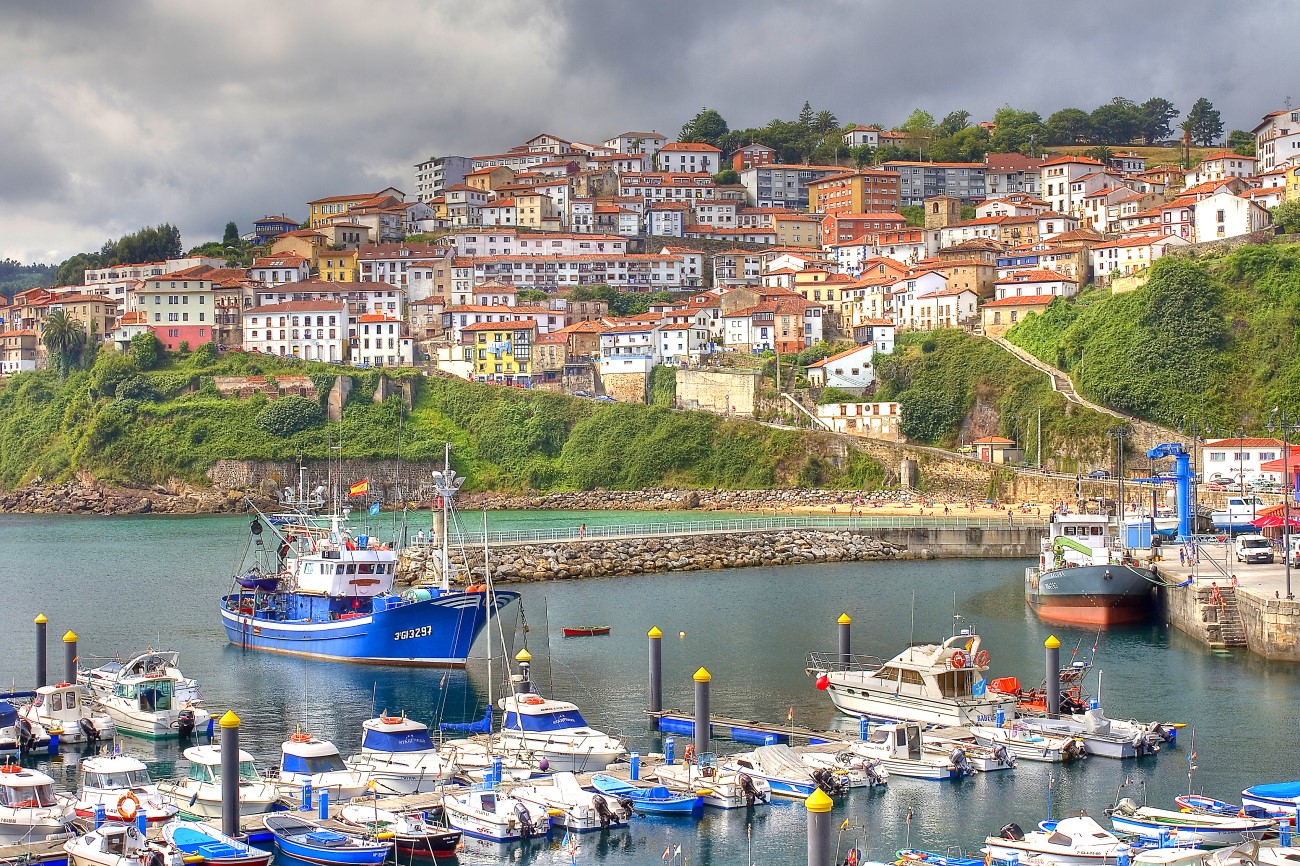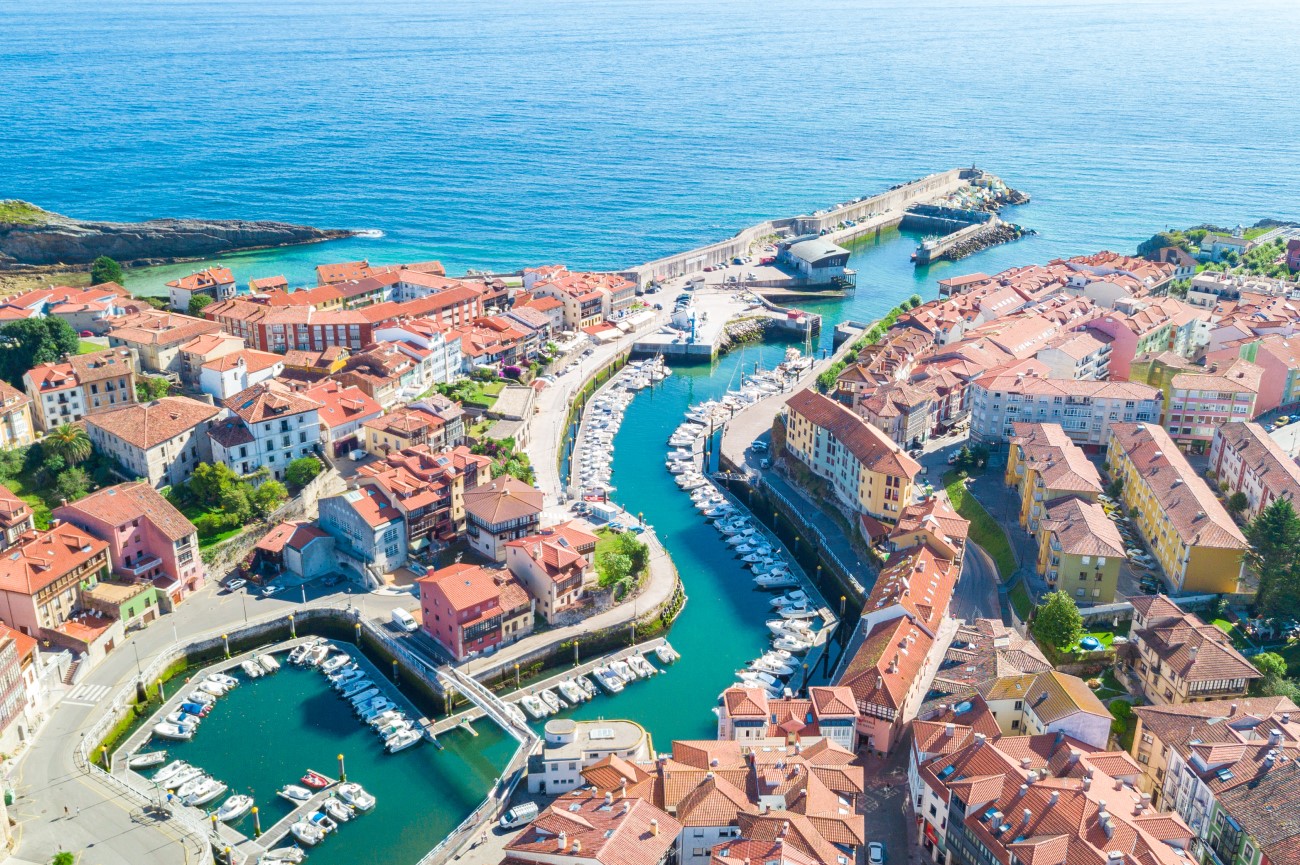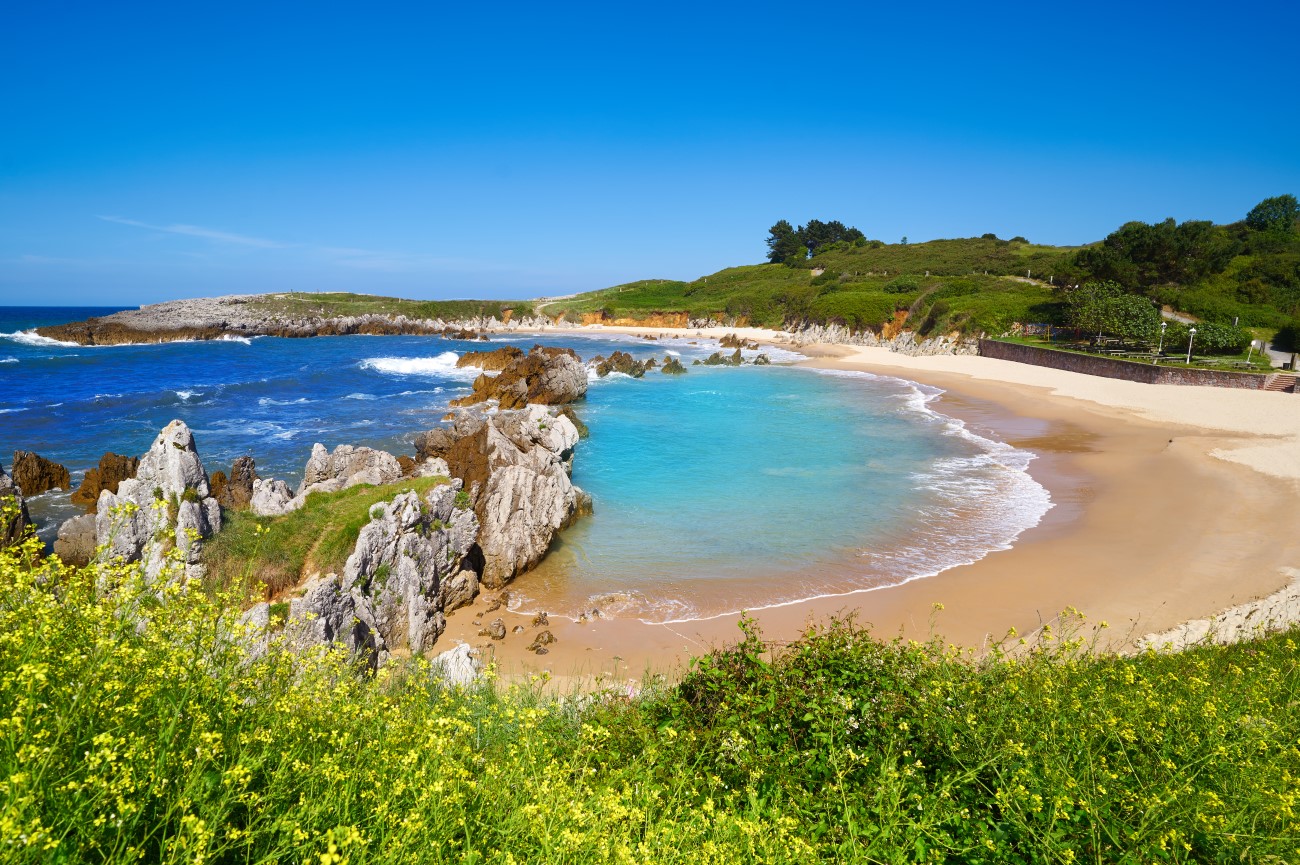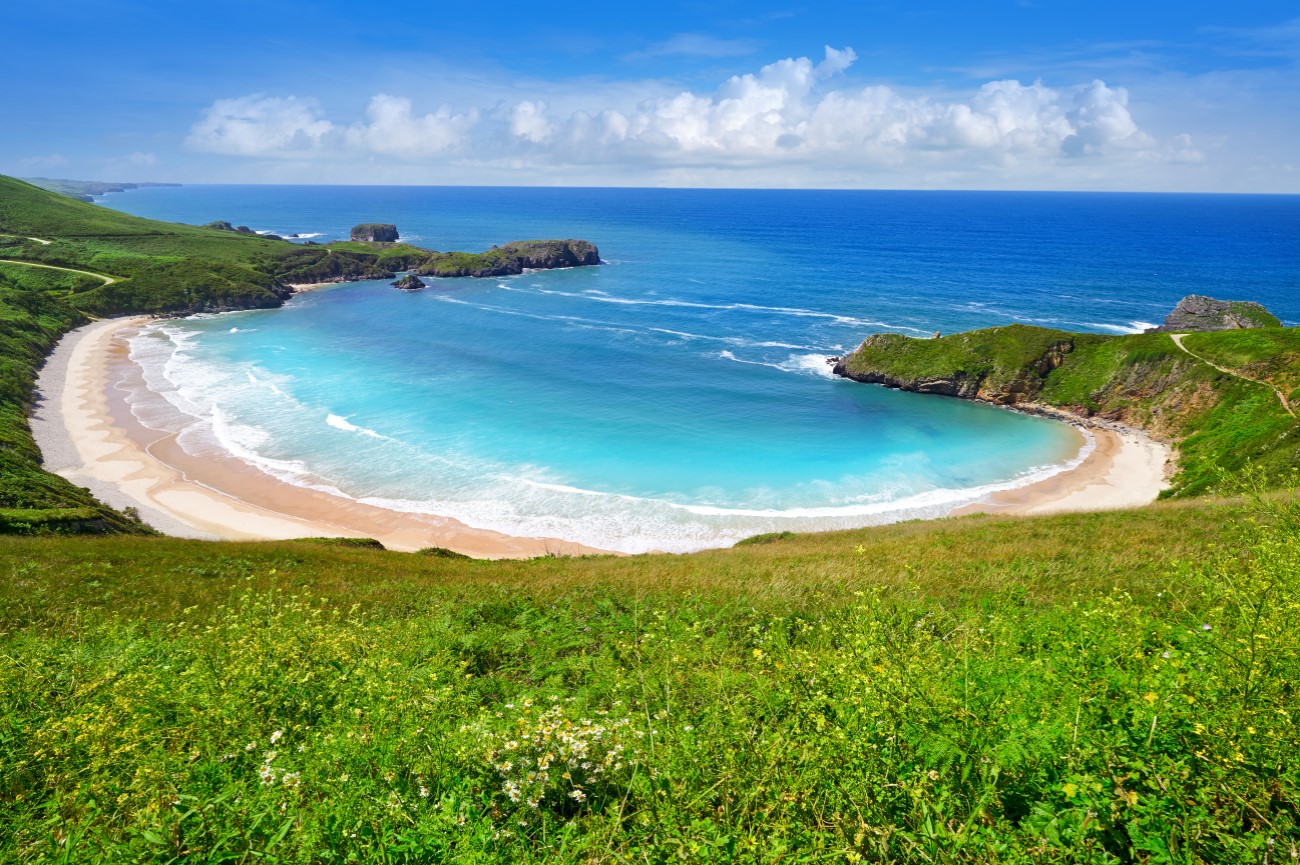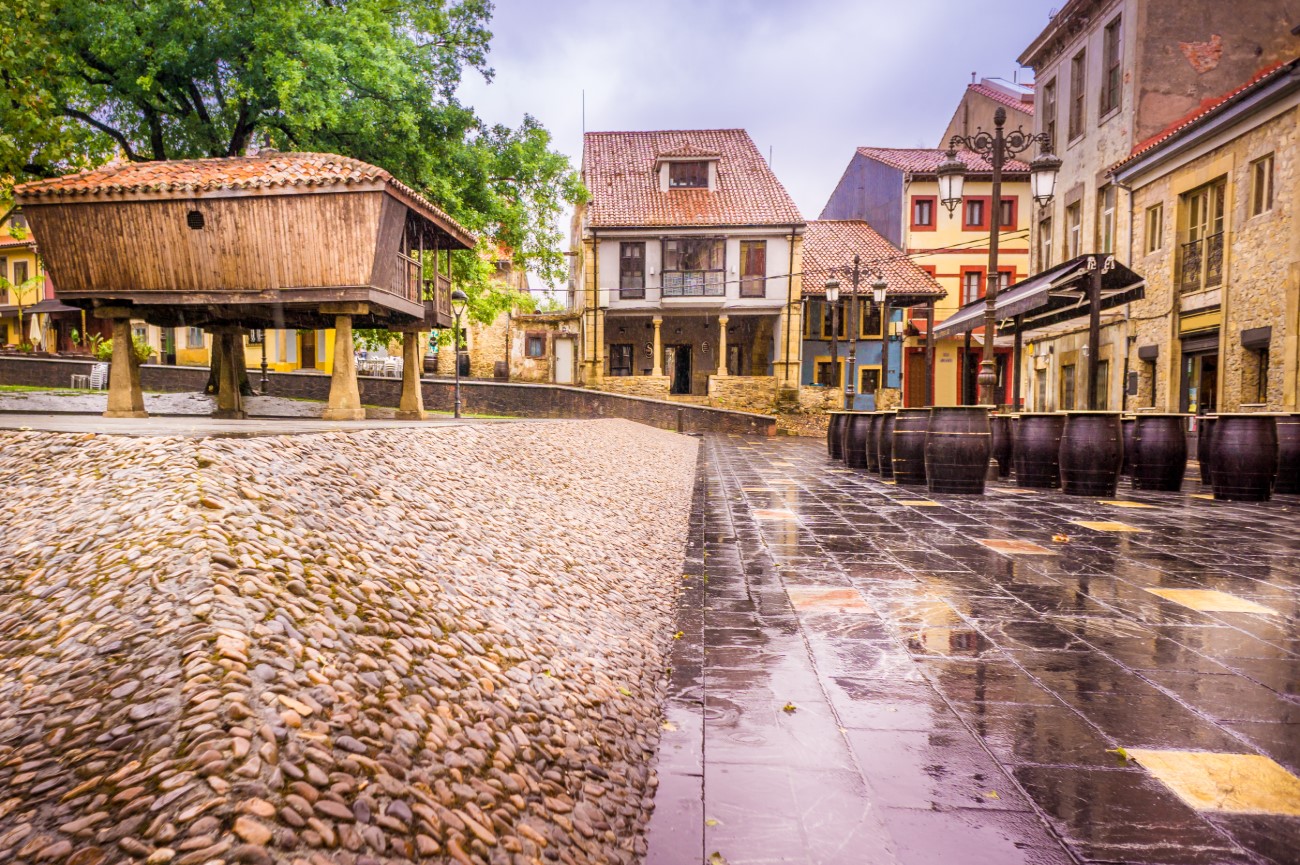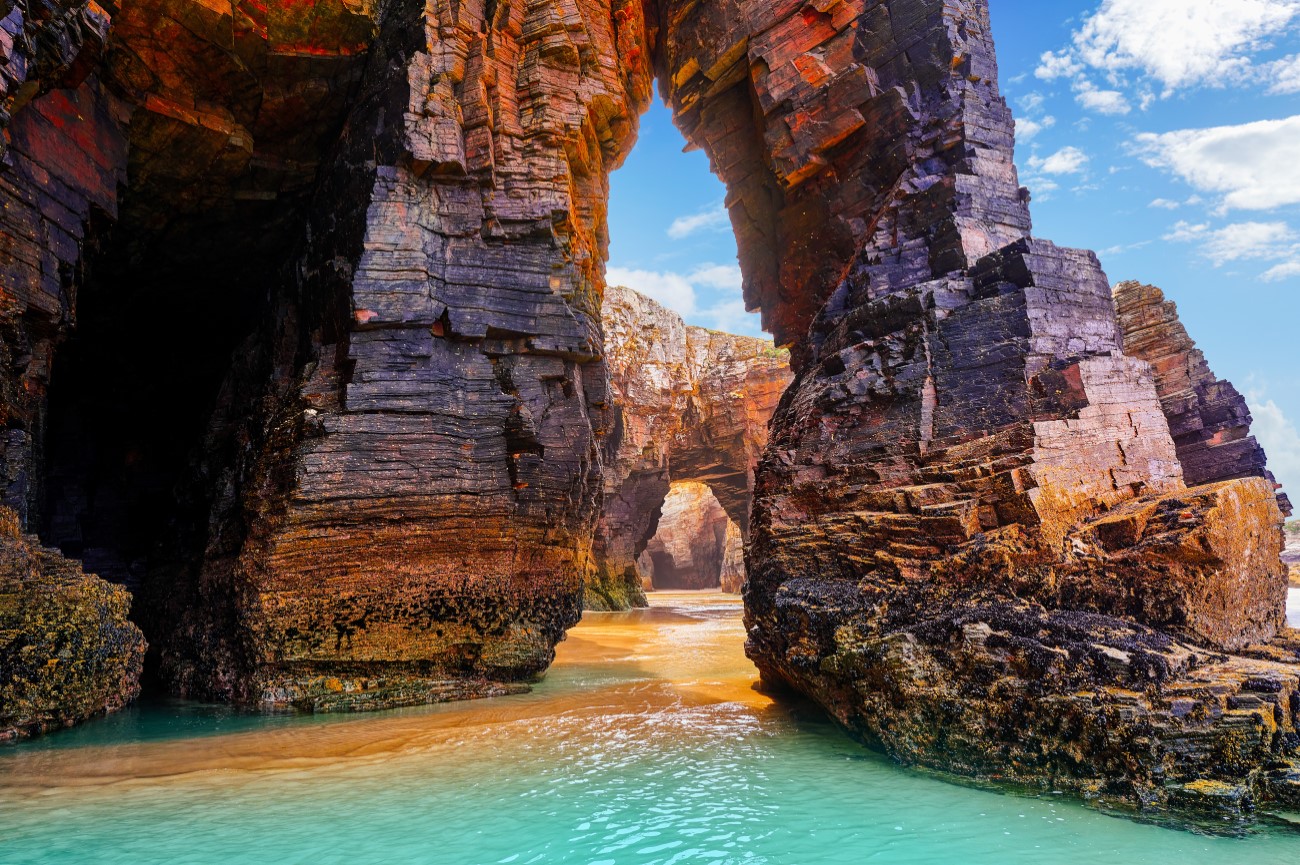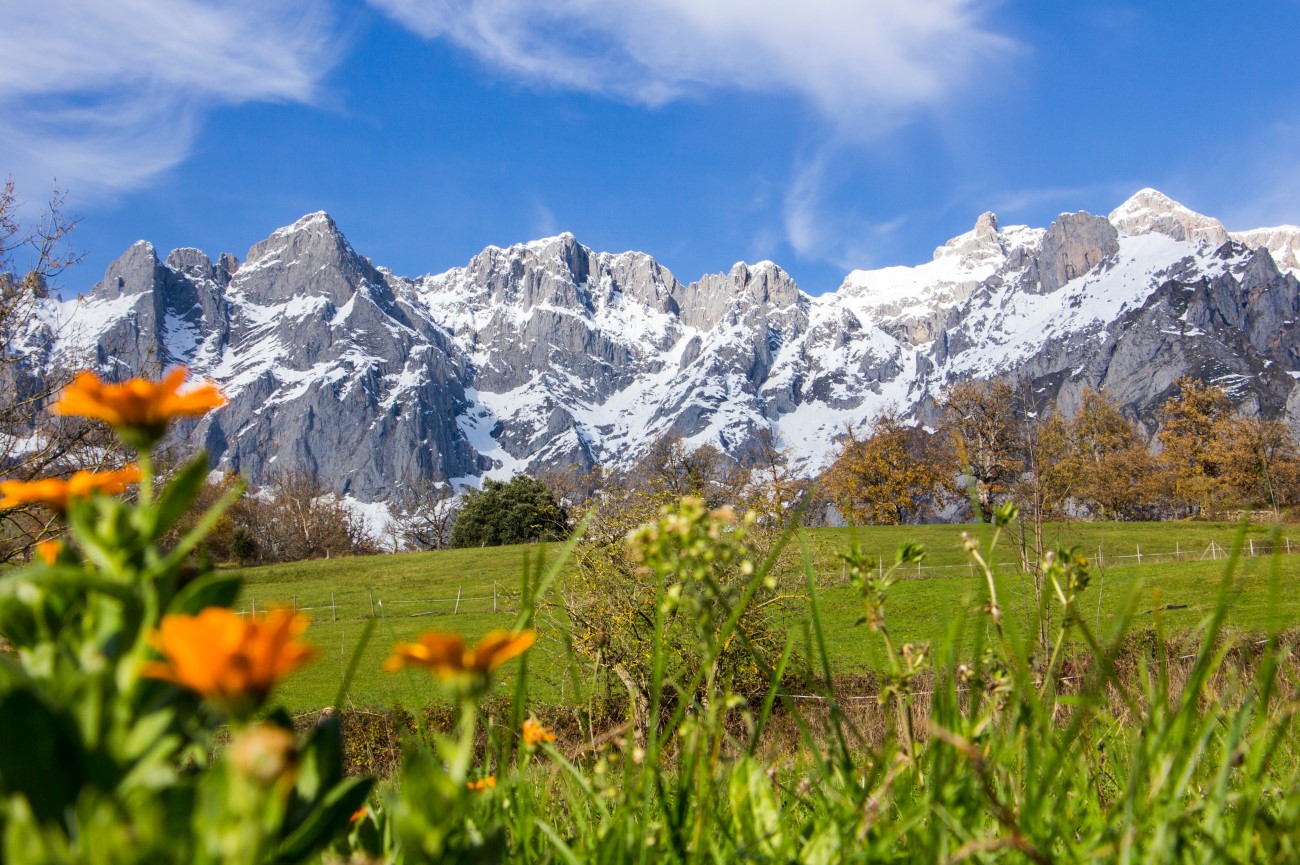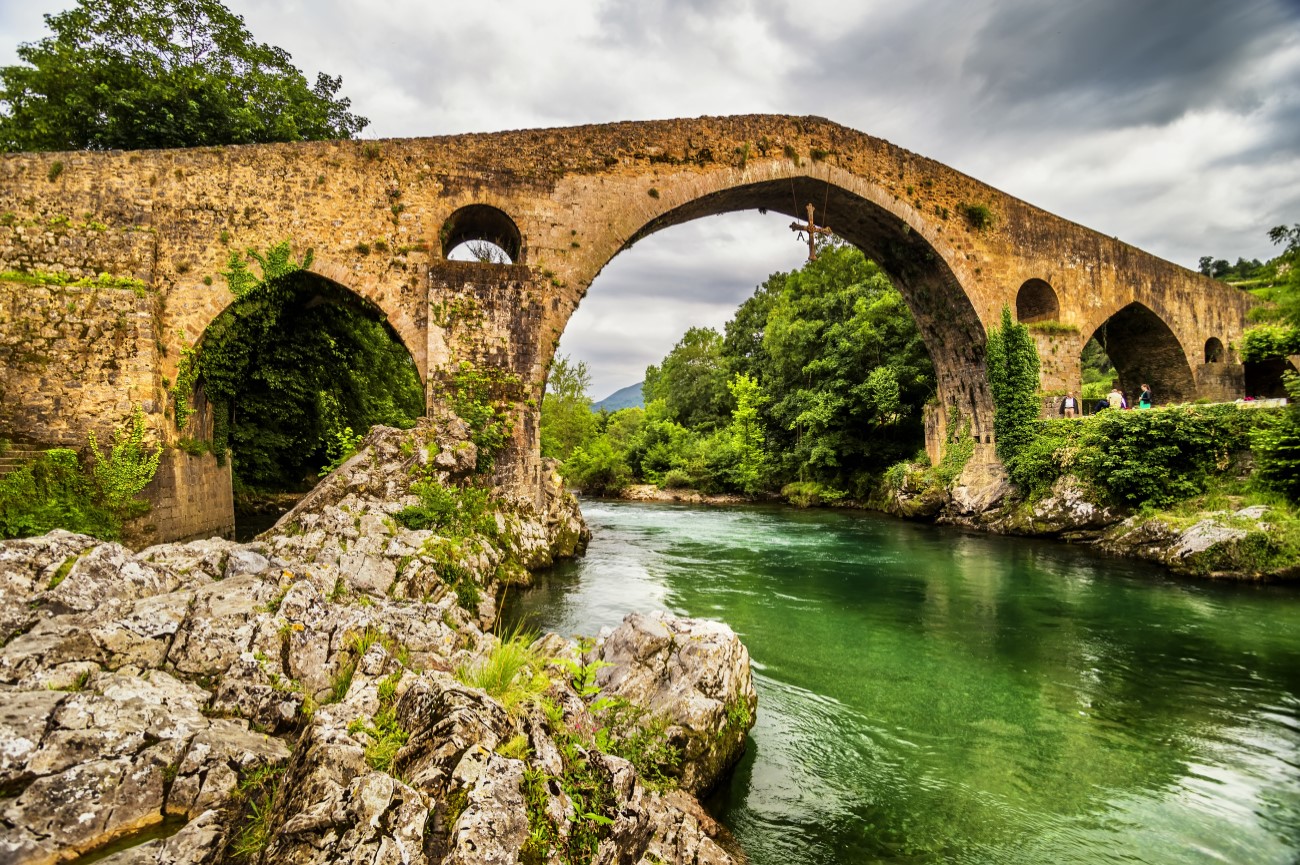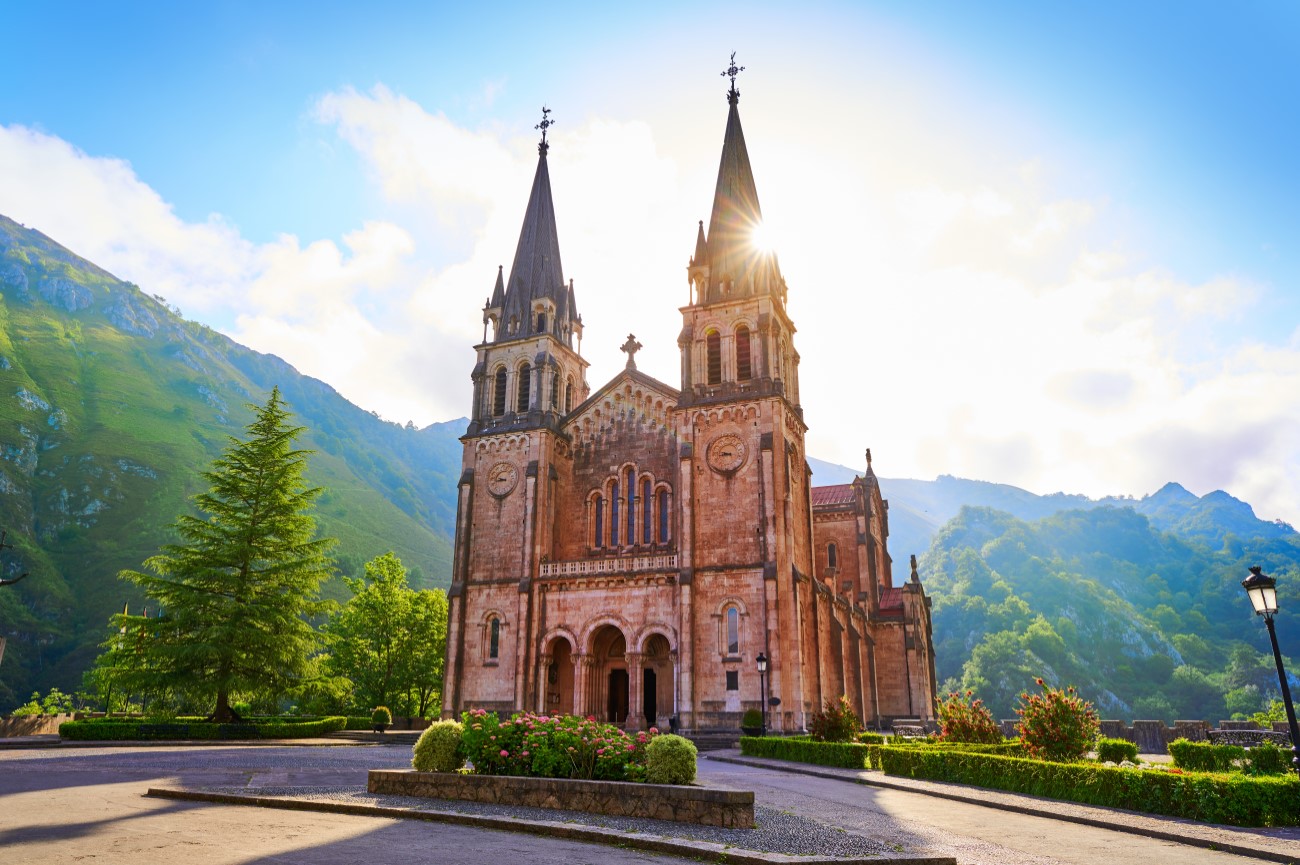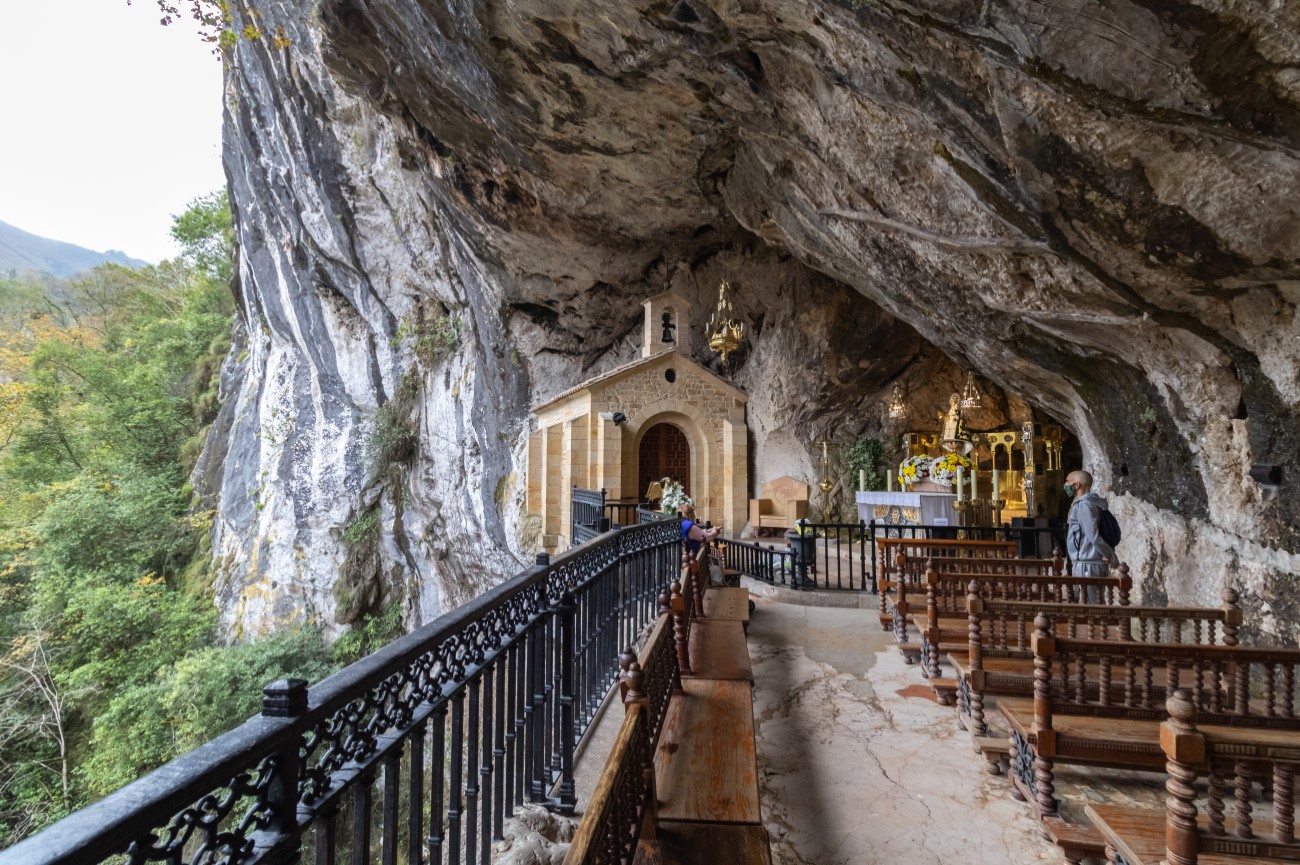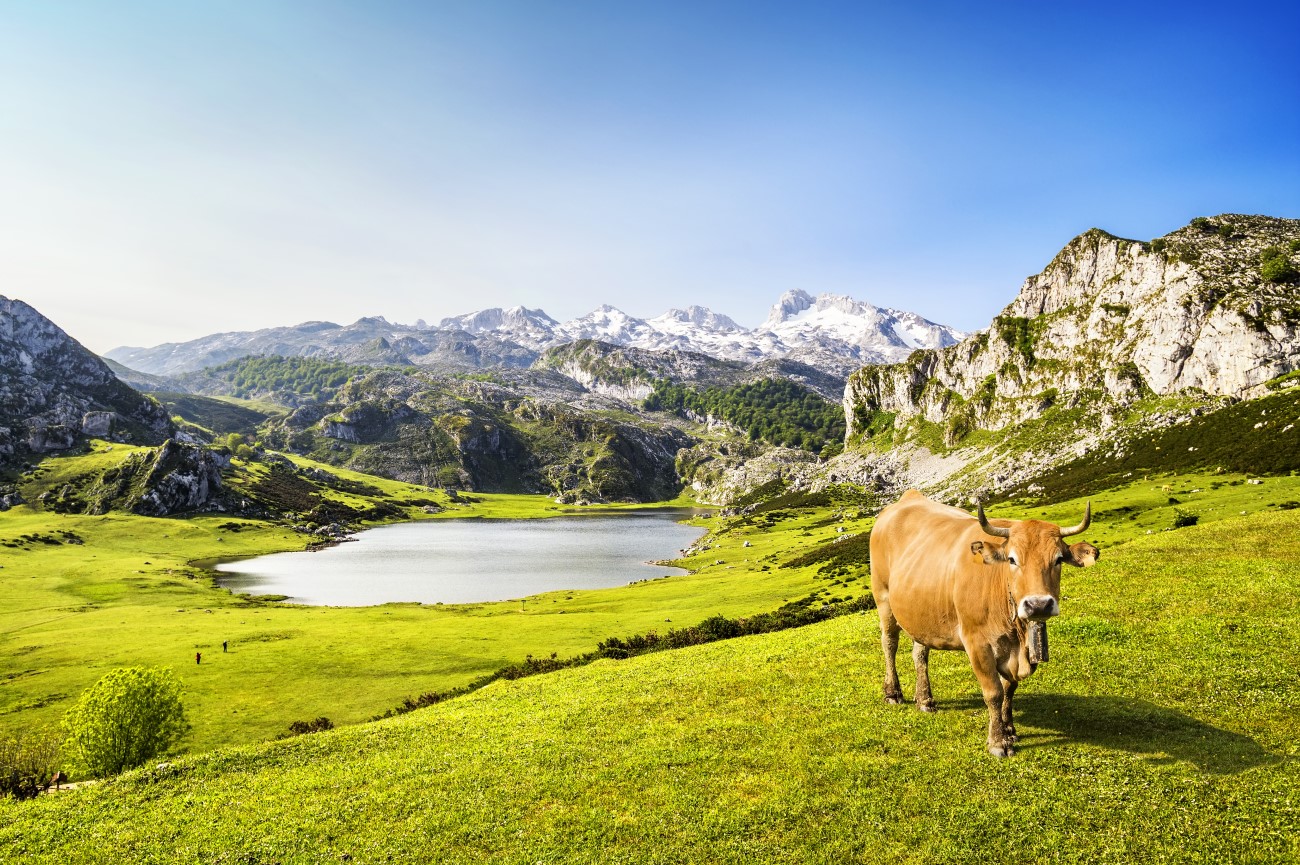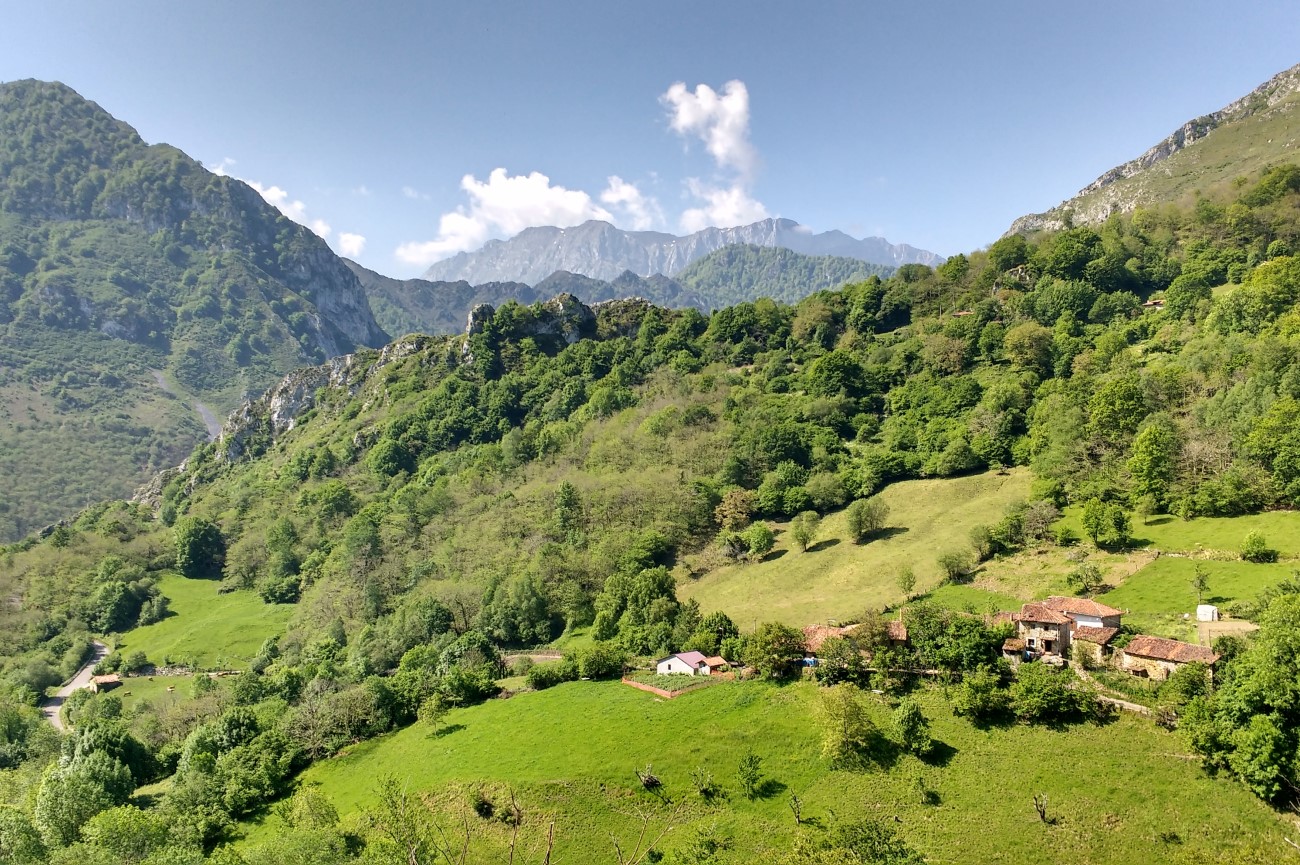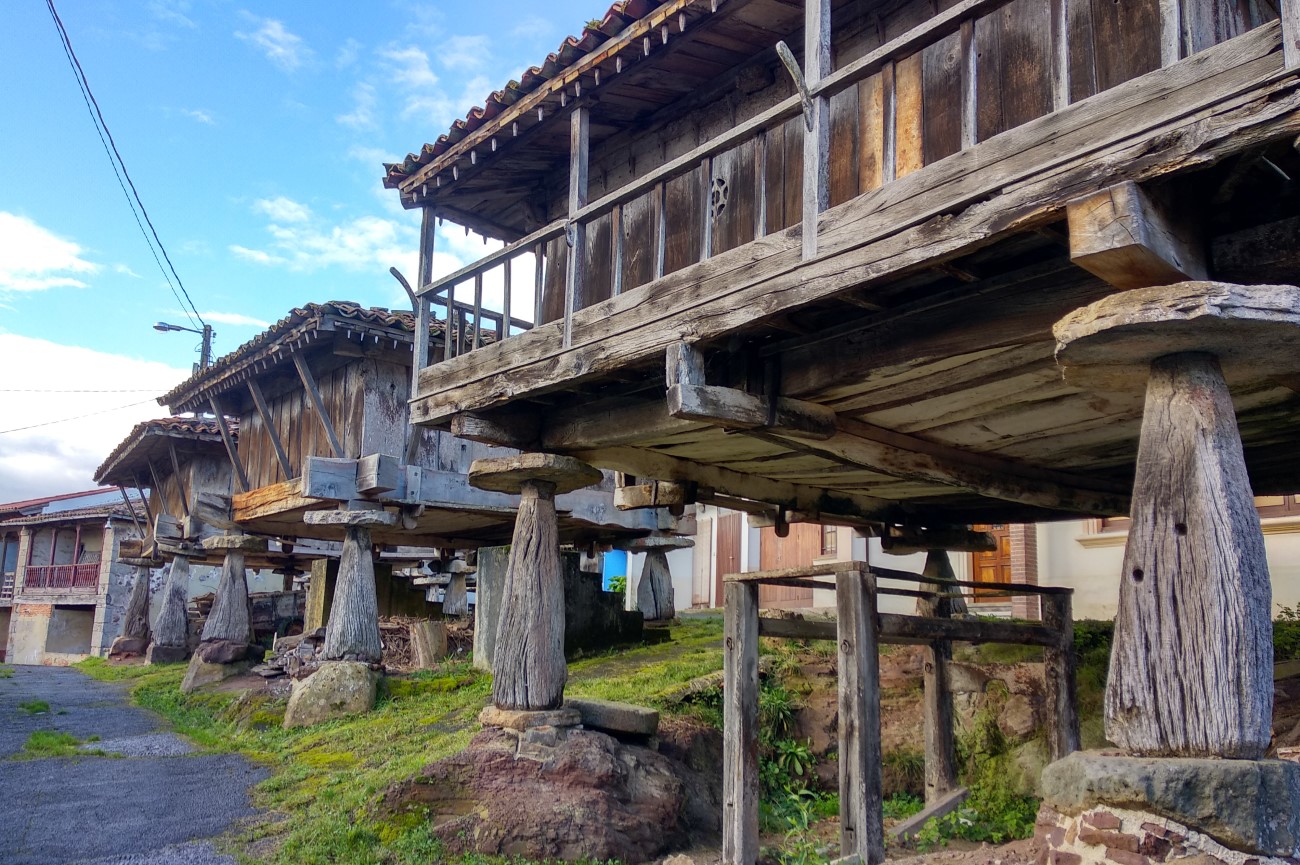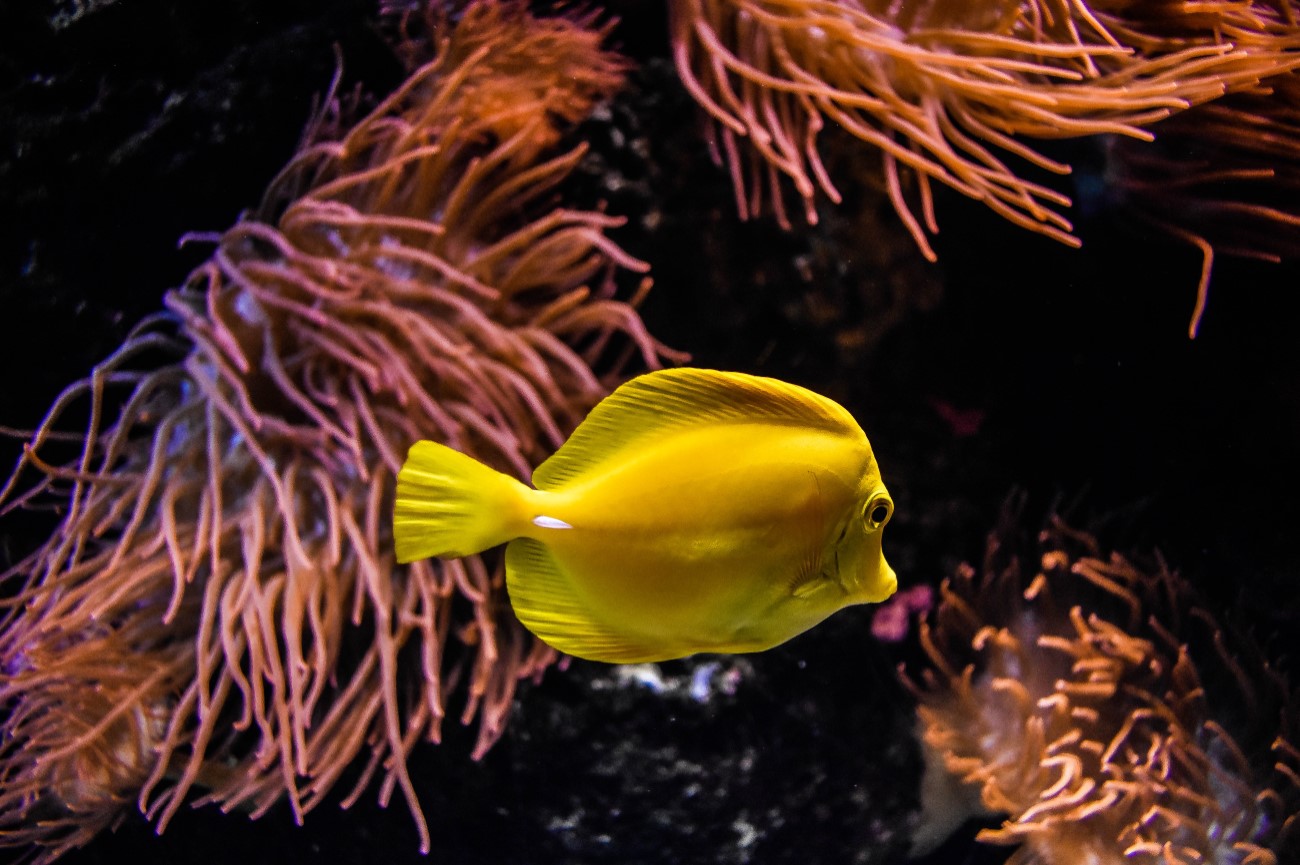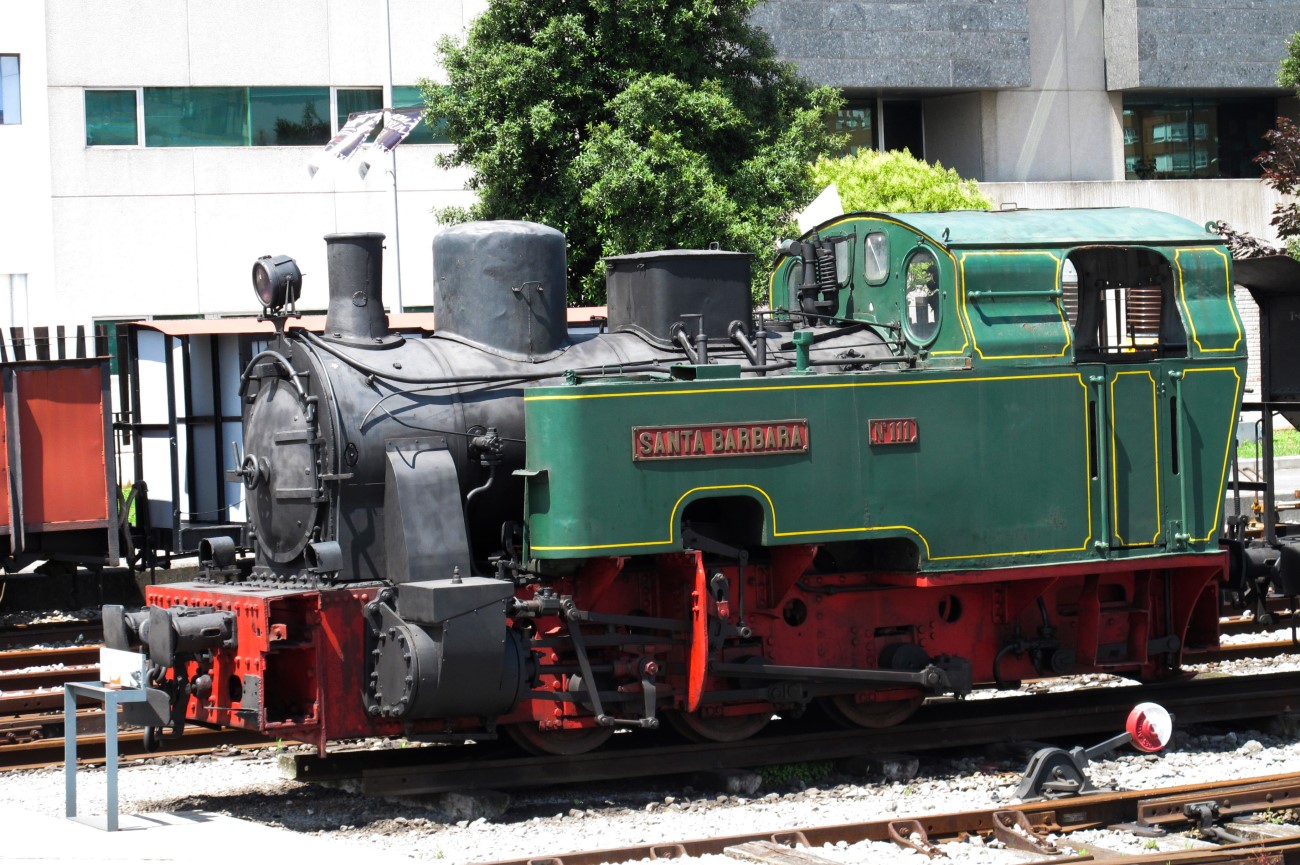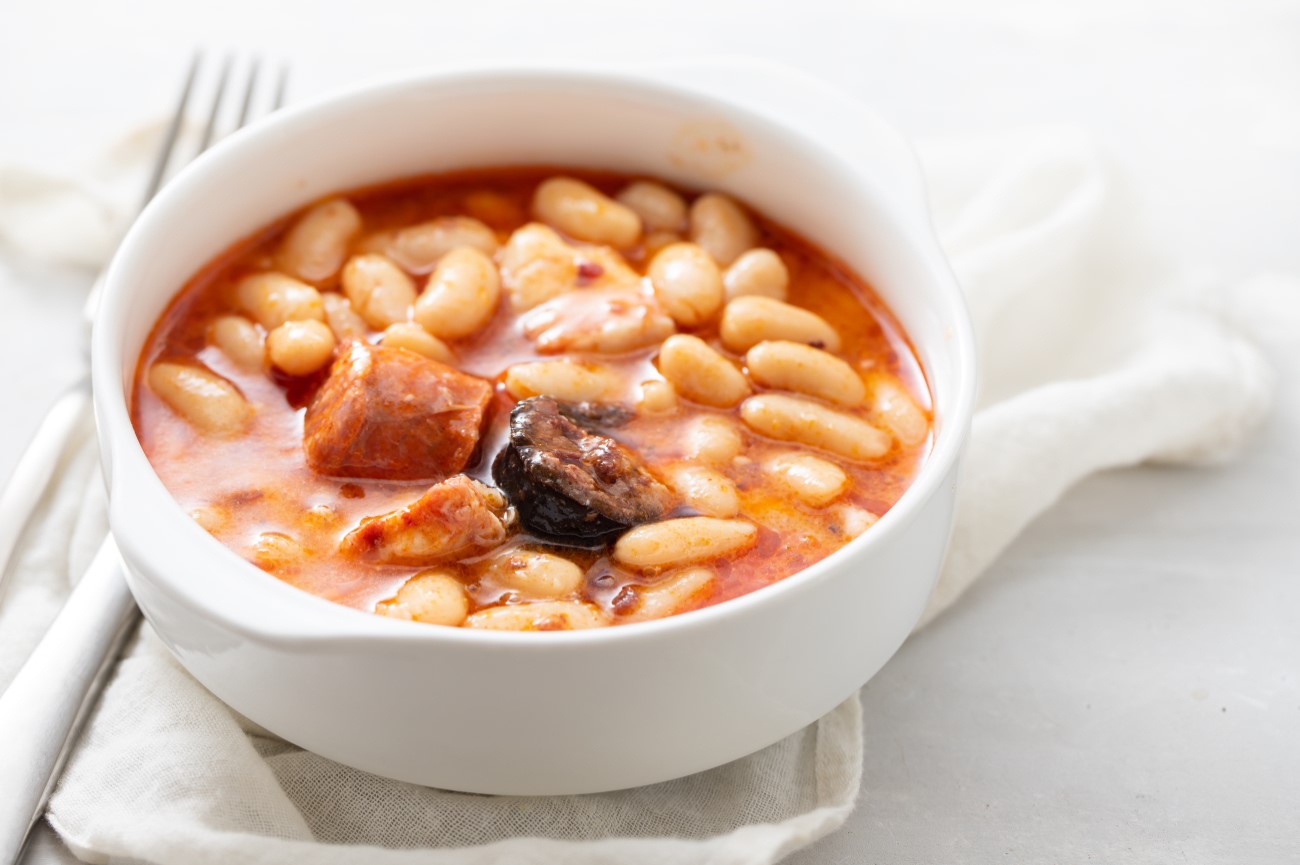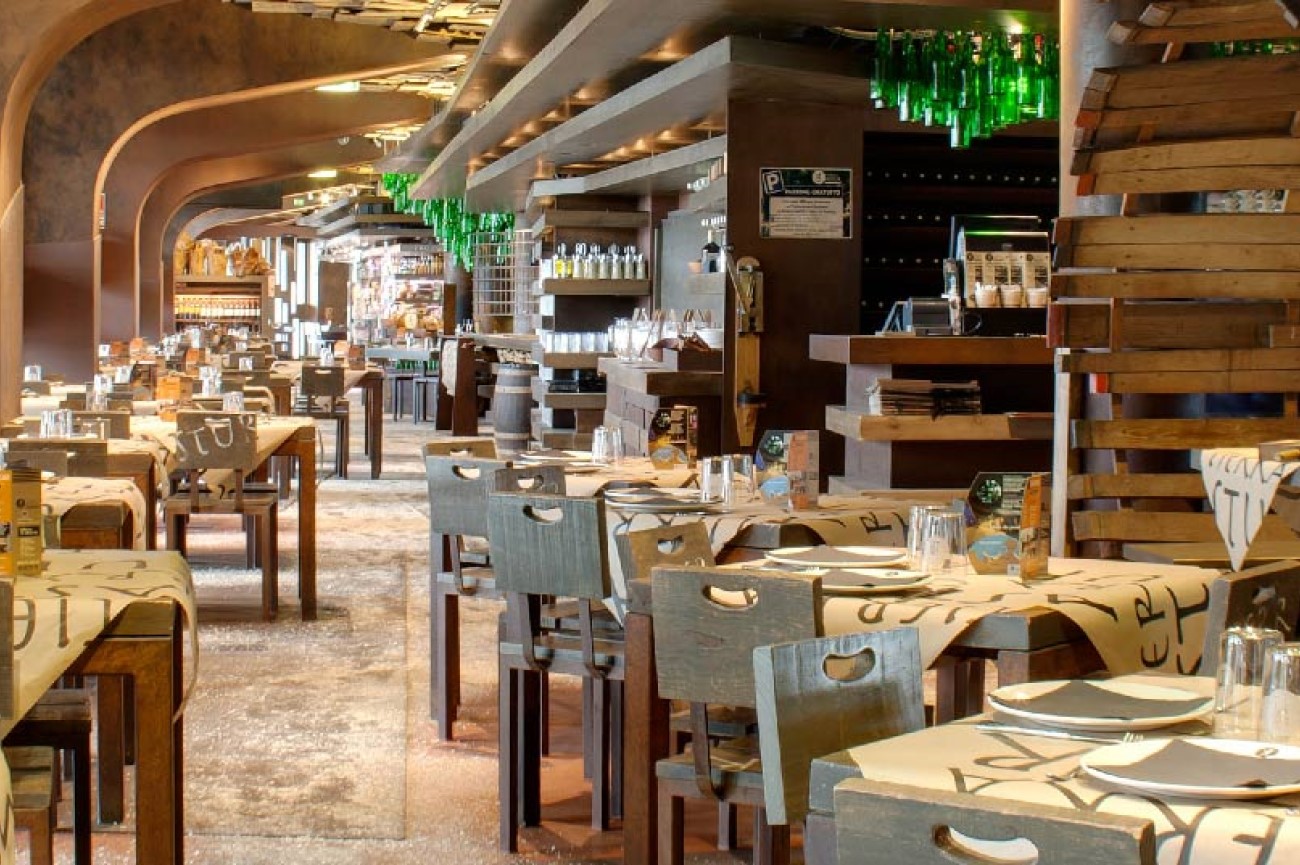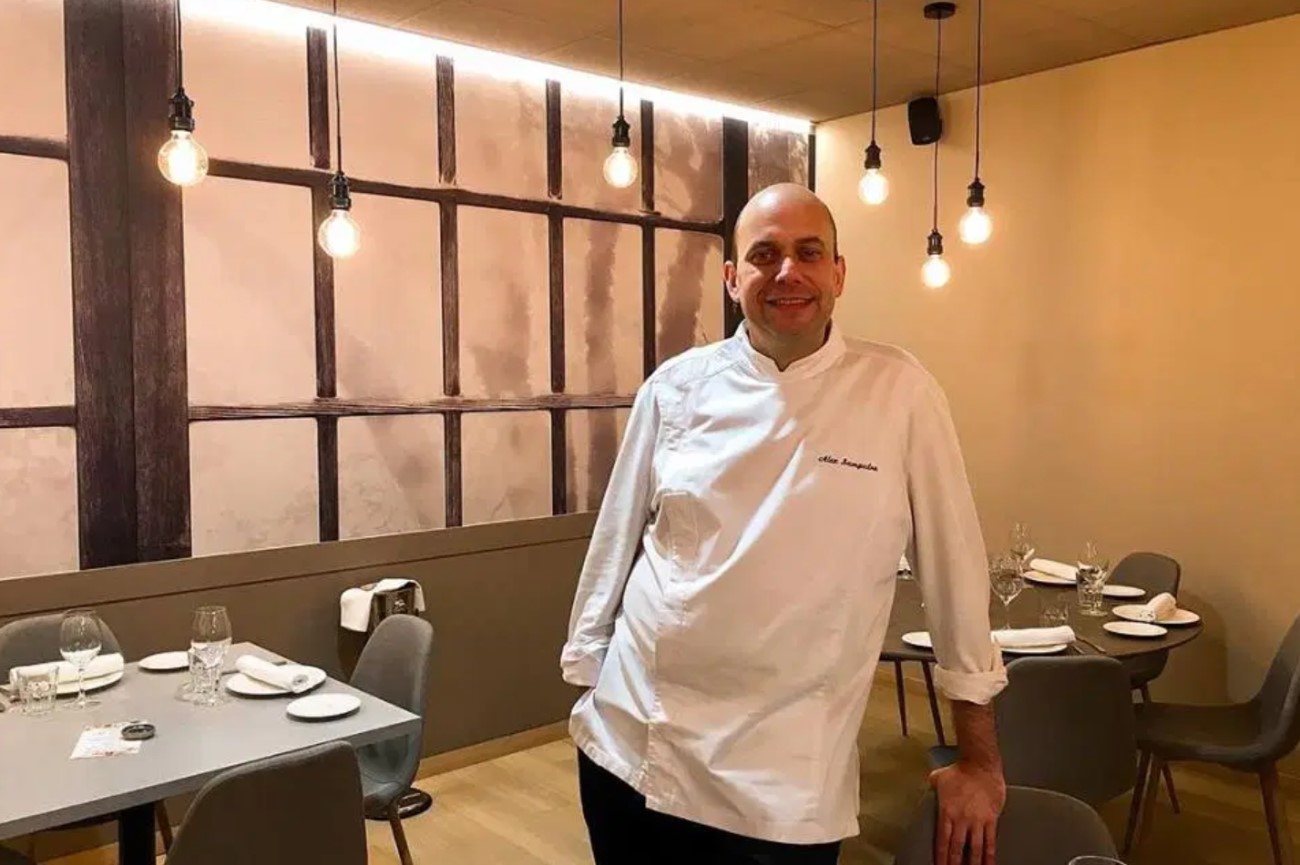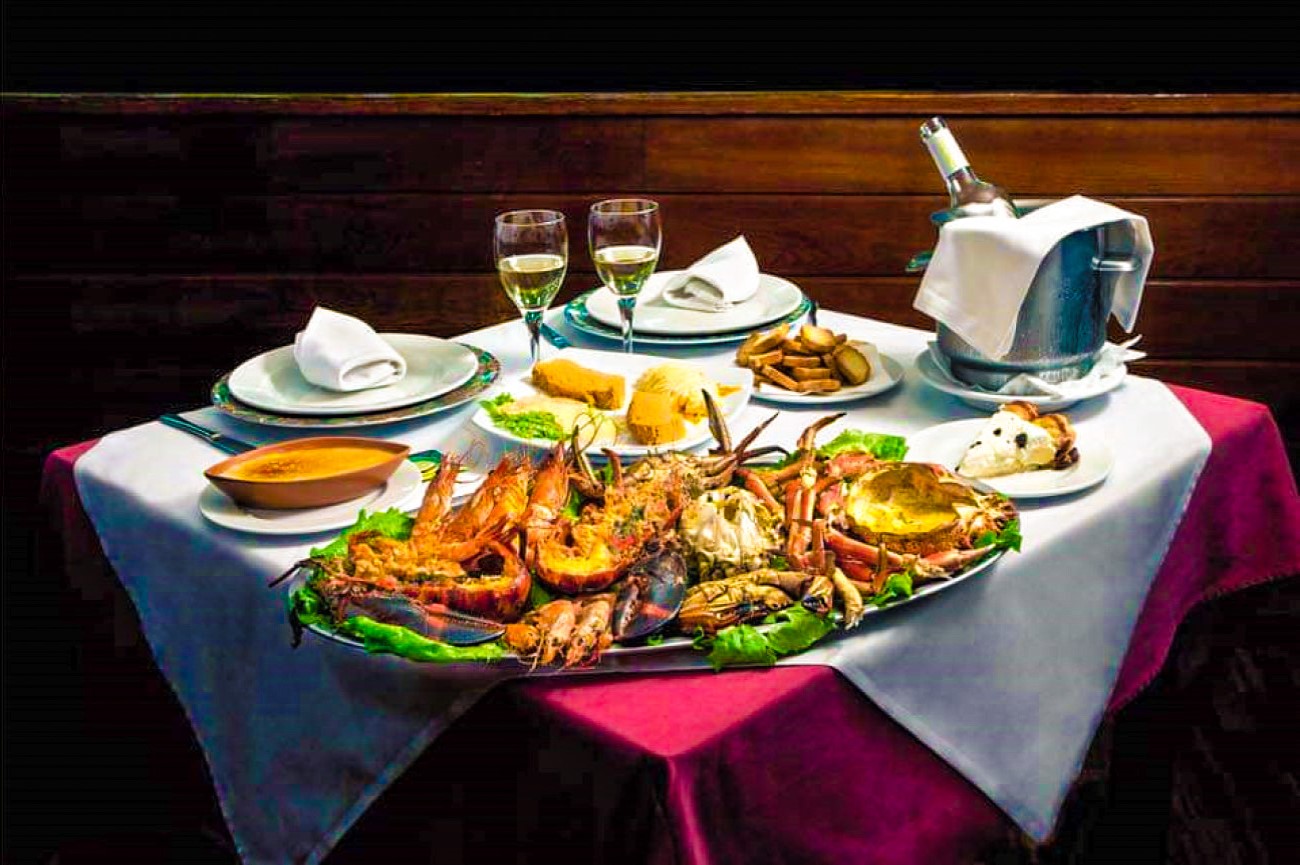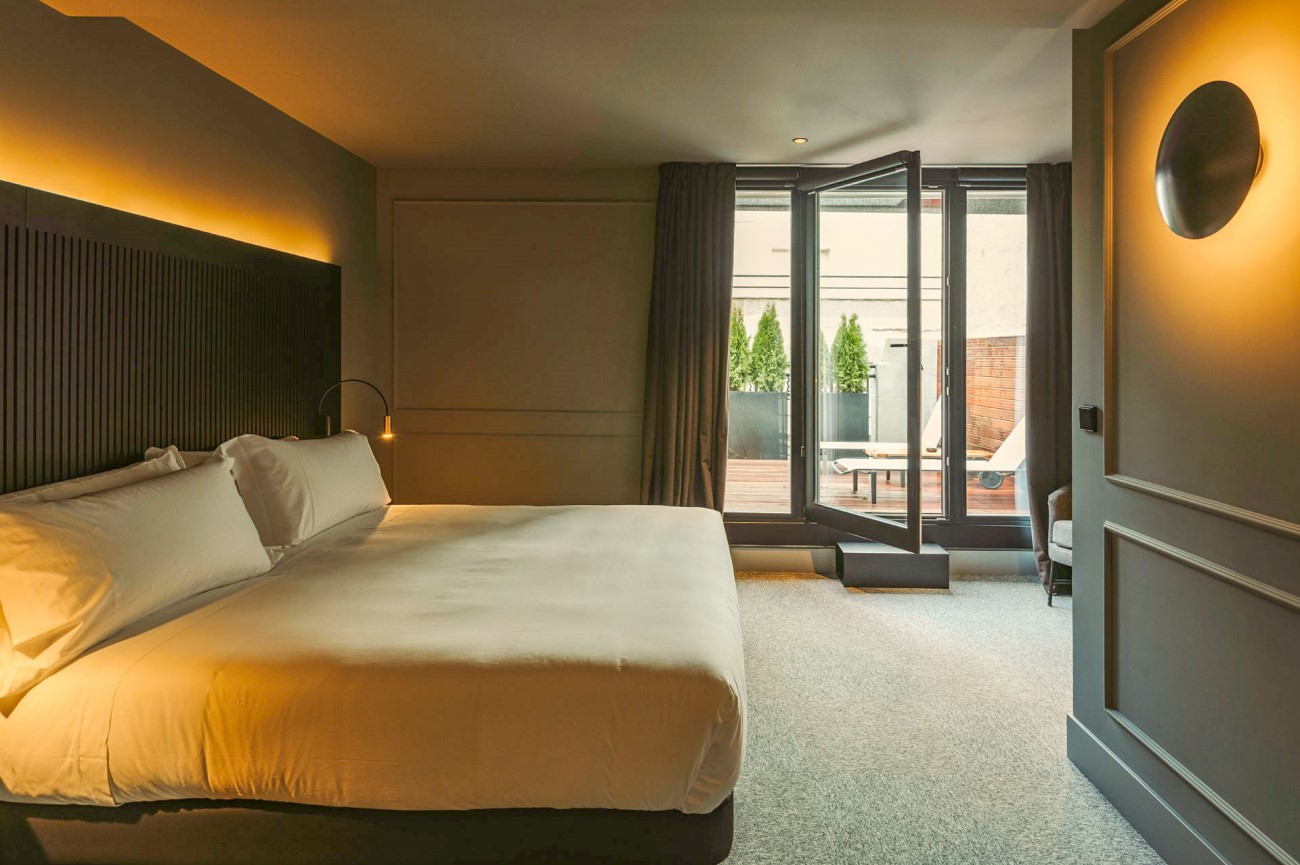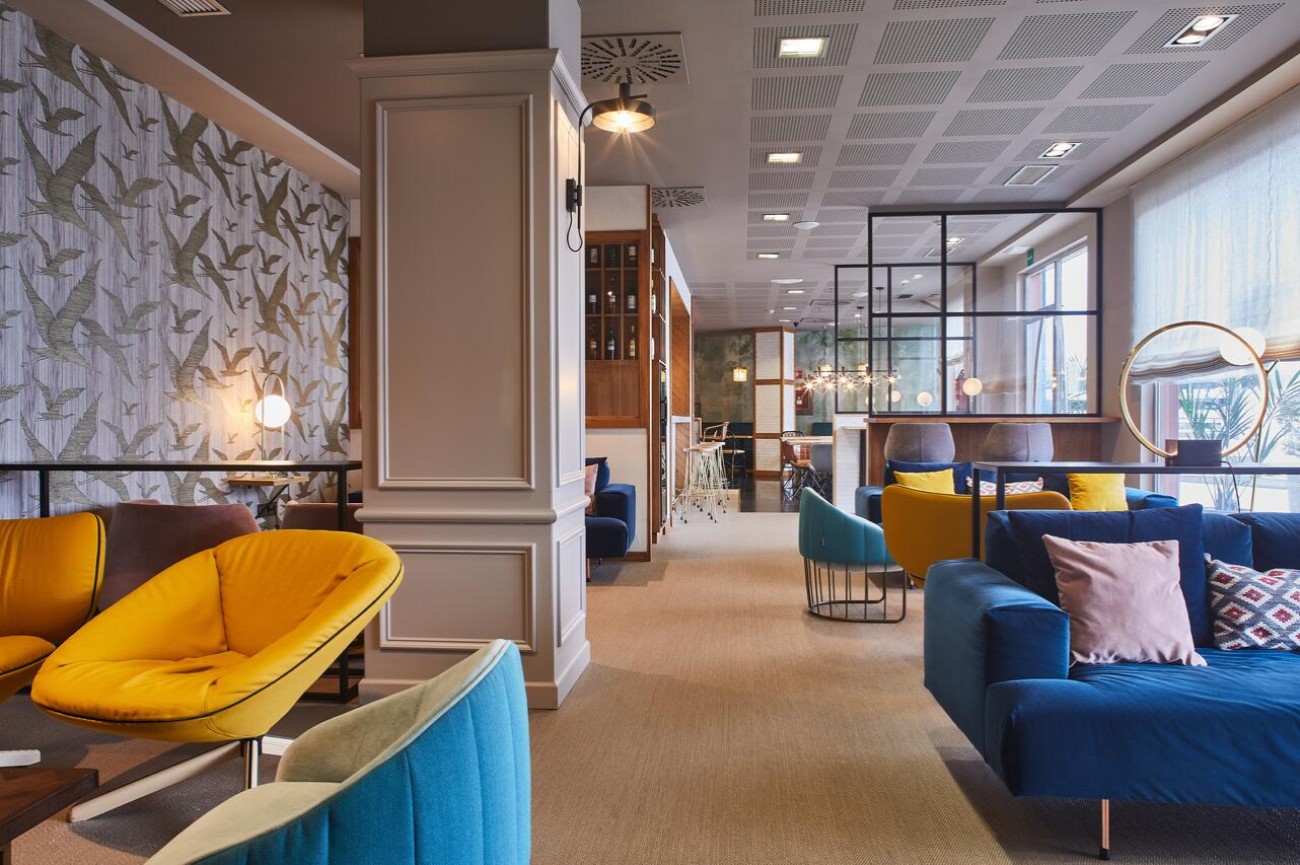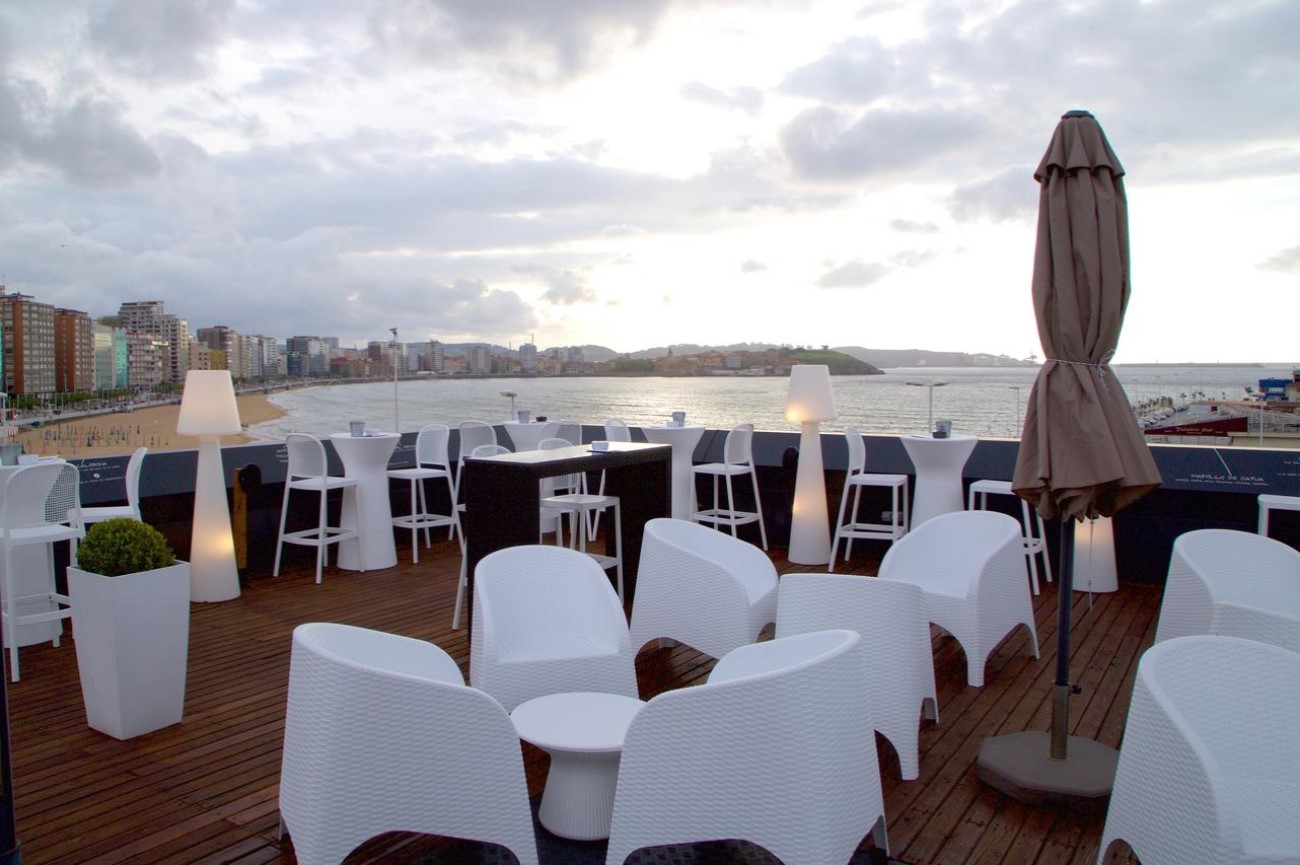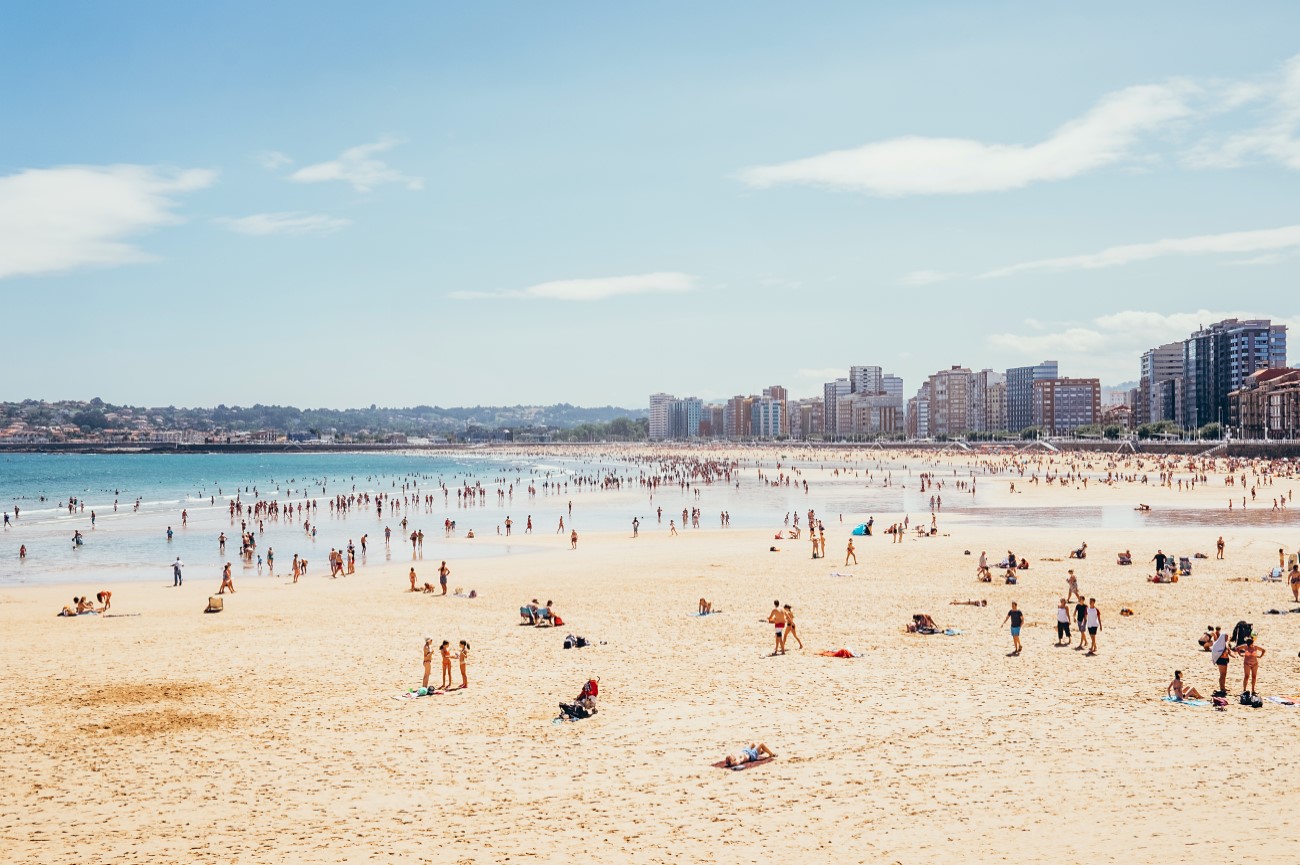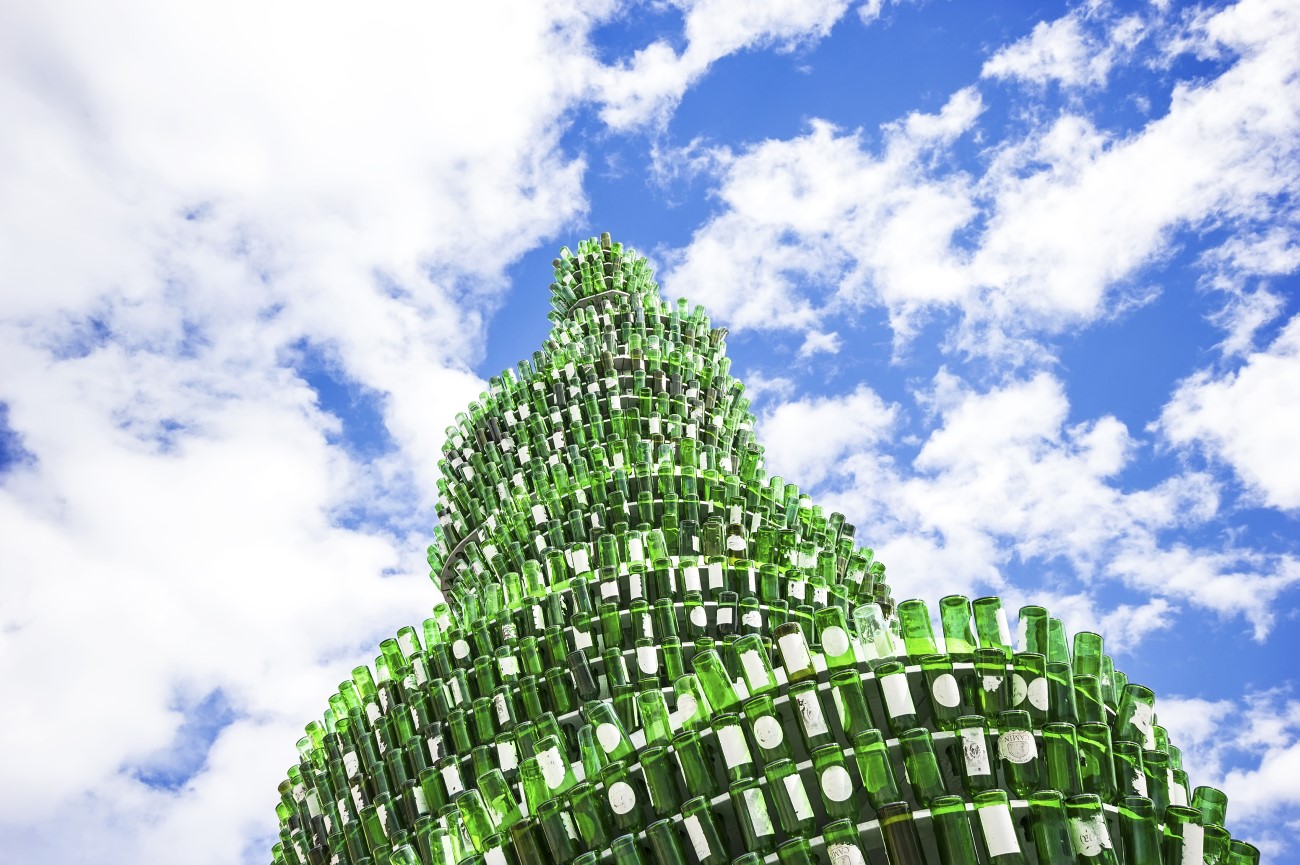Things to do in Gijón, Spain
Framed by beaches and lush hills Gijón is the largest city in Asturias. Once famous for its industrial background, the city has since reinvented itself with modern seafront promenades, lively restaurants and cultural landmarks.
The old fisherman's quarter sits on a headland known as Cimadevilla. It’s here you’ll find the Cerro de Santa Catalina, a clifftop park with an ancient fort and a sculpture by the Spanish Basque sculptor Eduardo Chillida.
Gijón is also home to several museums, Roman ruins and traditional cider bars. Follow our one-day itinerary and discover the best things to do in Gijón, including day trip ideas within the Asturias region.
One Day in Gijón

Morning: Museum of the Asturian People
Start your day in Gijón with a visit to the Museum of the Asturian People. This is the perfect place to learn more about Asturias culture and heritage. The museum features a variety of historical items, but the highlight is the Asturian bagpipes. Visitors also have access to an outdoor area with several buildings, including a typical country house with a cider press and a windmill.
Parque Isabel la Católica
After visiting the museum, take a walk through the Parque Isabel la Católica. Named after the Spanish queen Isabel, this charming park was designed in the 1940s. It is home to over 60 plant species, as well as animals, like squirrels and peacocks. Along the park, you’ll also find a few sculptures including a monument dedicated to Alexander Fleming, the discoverer of penicillin.
Playa de San Lorenzo
Make your way to Gijón’s seaside promenade and stop by the Playa de San Lorenzo. This vast sandy beach stretches for 1.5km and is the closest one to the town centre, although it gets smaller at high tide. There are about 15 different entrances to the beach, but the most popular one is La Escalerona. Besides swimming, you can also do a variety of watersports here, including surfing and kayaking.
Plaza Mayor
At the end of the promenade, you’ll find the Plaza Mayor, one of the main squares in Gijón. The town hall or ayuntamiento stands on the east side, surrounded by other historical buildings with covered galleries. These are occupied by shops, cafés and cider bars, where you can grab a drink. If you visit on the second weekend of the month you might catch the Mercado Artesano, a local crafts market.
Iglesia de San Pedro Apóstol
Spend the rest of the morning exploring the Cimadevilla neighbourhood. It’s here you’ll find most of the town’s historical landmarks. Among them is the Iglesia de San Pedro Apóstol. Standing on the edge of the coast, this striking church dates back to the 15th century. It was almost fully destroyed during the Spanish Civil War but got rebuilt afterwards. Gaspar Melchor de Jovellanos, a renowned Spanish statesman is buried inside.
Cerro de Santa Catalina
From the church, follow the Camín de la Fontica until you reach the
Santa Catalina headland. Take a wander through the clifftop park and
enjoy the incredible sea views from the top.
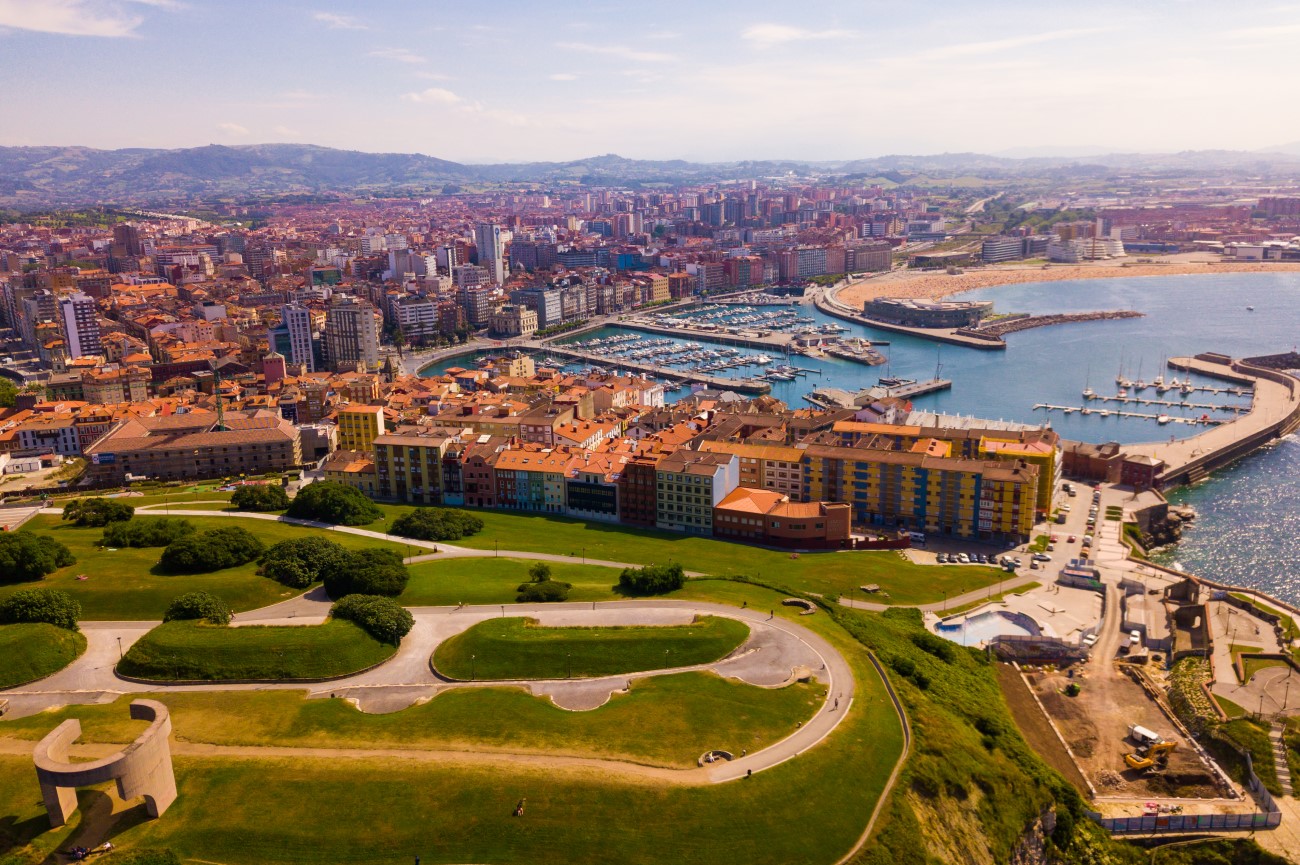 Panoramic aerial view of Cerro de Santa Catalina with marina and Gijon city on the background, Spain
Panoramic aerial view of Cerro de Santa Catalina with marina and Gijon city on the background, SpainAbove it, there’s the
Elogio del Horizonte (Eulogy to the Horizon), an imposing concrete
sculpture designed by the famous sculptor Eduardo Chilida.
There are also remains of fortifications here from the 18th to the 20th centuries.
Morning - Gijón Tour Map
Afternoon: Museo Casa Natal de Jovellanos
While in Cimadevilla, head to Plaza de Jovellanos. This small square is home to the Museo Casa Natal de Jovellanos, a museum dedicated to Gaspar Melchor de Jovellanos. Born in Gijón, Jovellanos was a celebrated politician and philosopher of the Age of Enlightenment. The museum occupies an 18th-century stone building and features personal objects of Jovellanos and antique furniture. There’s also a section with 19th and 20th-century paintings by Asturian artists such as Evaristo Valle. West of the square is a section of the town’s old Roman walls.
Termas Romanas de Campo Valdés
A few steps from the museum, are the ancient Roman Baths dating back to 100 AD. Visitors can observe the ruins and learn more about the function of each room. The space is divided into cold, warm and hot areas, once used as saunas. 3D reconstructions show you a glimpse of the original site and there are also artefacts on display found during the site’s discovery in 1903. The entrance is near the Church of San Pedro Apóstol.
Revillagigedo Palace
Another striking building in Gijón is the Palacio de Revillagigedo. Sitting on Plaza del Marqués, this Baroque palace stands out with its crenellated twin towers, one of them dating back to the 15th century. Built by order of the Marquis of San Esteban del Mar de Natahoyo, the palace is named after its last owner, Count of Revillagigedo. Today it houses Gijón’s international art centre. Adjoining the palace is the Church of San Juan Bautista. After seeing these two sites, walk along the marina and watch the colourful sailing boats.
Playa de Poniente
Before the sun goes down, head to Playa de Poniente. Created with imported sand, this beach is much wider than Playa de San Lorenzo. It’s especially popular in the summer for the San Juan festivities and the August cider festival. On the east side of the beach, you’ll find Gijón's thalassotherapy centre, a spa that offers seaweed baths, steams and many other beauty treatments.
Museo Ferrocarril
Close to the beach is the Museo Ferrocarril. Step inside this small museum to discover more about Asturias’ railway heritage. Open since 1998, it occupies the former railway station, Estación del Norte. Inside you’ll find several steam engines as well as trams and locomotives, many of which you can climb on. There’s also an exhibition space that shows visitors how the railway system worked around the 19th century.
Cider Houses
End the day with a sample of Asturian cider. Sidrería Tierra Astur is
one of the most famous cider bars in Gijón and has a few branches
scattered across Asturias. Besides cider, they also have a good food
selection with seafood and cheese platters.
Other cider houses worth trying include Casa Oskar and La Galana. For the full local experience, try pouring the cider from up above and watch the bubbles form.
Afternoon - Gijón Tour Map
Day Trips and Other Things to Do In Gijón, Spain:
- Senda del Cervigón: While visiting Asturias, you should check the Senda del Cervigón. This hiking trail follows the eastern coast of Gijón and it’s surrounded by rugged landscapes. It stretches for about 8km and takes 3 hours to complete, but of course, you can do a small section of it too.
- Jardín Botánico Atlántico: You’ll find this botanical garden in the southeast of Gijón. It’s a peaceful oasis away from the city and home to over 2000 plant varieties. These include endemic species, but also from the Atlantic coastal regions. Highlights include a historical garden that is over 150 years old and the natural forest Carbayera del Tragamón.
- Universidad Laboral de Gijón & LABoral Arts Center: Originally built as a vocation training centre by Jesuits, this large campus has now turned into a multipurpose cultural centre. At the heart of it is an imposing 1940 building called Laboral, which houses part of the Oviedo University. After exploring the courtyard, you can climb up the Giralda-inspired tower.
- Oviedo: About 30 minutes away from Gijón is Oviedo, the
capital of Asturias. Besides its industrial roots, this city also has
many historical features.
The most important landmark is Santa María del
Naranco, a striking pre-Romanesque church that is a UNESCO heritage
site.
There are also other attractions in the city centre including the Oviedo Cathedral and the Fine Arts Museum.
- Costa Verde: Costa Verde is a stunning coastal stretch that covers Asturias, Cantabria and part of the Basque country. It gets its name from the lush green mountains that surround this region. Facing the Cantabrian sea you'll find many paradisiacal beaches and picturesque towns, like Luarca, Cudillero, Llastres, Ribadesella and Llanes
- Avilés: Halfway between Gijón and Oviedo, this Asturian city is famous for its maritime tradition and medieval roots. The old quarter is a historic-artistic site, home to striking buildings such as the 13th-century church of Sabugo and the central Plaza de España with its collonaded galleries and the City Hall. It’s worth exploring the streets of Rivero and Galiana and catching a show at the Centro Cultural Internacional Oscar Niemeyer, one of the city’s most modern architectural sites.
- Las Catedrales beach / As Catedrais: Originally called Praia de Augas Santas, this beach near Ribadeo gained a new name thanks to its Gothic-style rock formations sculpted by centuries of sea erosion. Visitors can admire 30-metre high buttresses or get lost inside the sea caves. This natural scenario is best seen at low tide when the sandy stretch is on full display. If you visit during Semana Santa or in the summer season you’ll need a permit (available online) to get down to the beach, as it gets quite busy. From July to September you can get a bus from the Ribadeo tourist office. Another alternative is to get a train to Esteiro and walk about 1km.
- Picos de Europa: Head east from Gijón, and you’ll soon reach the mountains of Picos de Europa. This national park stretches from the region of Cantabria to Castilla y León. Don’t miss a visit to the small hilltop villages and the scenic views from Mirador Del Naranjo De Bulnes. With a bit more time, you can explore some hiking trails, such as Ruta del Cares, a daring route that runs along the Cares river at about 700 metres high. The 12km path starts in Poncebos (Asturias) and ends in Caín (León). If you’re planning a trip to this region, make sure to read our Picos da Europa guide to discover all the must-see attractions.
- Cangas de Onís: Bordering the Picos de Europa national park is the small village of Cangas de Onís. The most famous attraction here is the Puente Romano. The bridge you see today dates back to the Middle Ages, but its structure reveals some Roman influences too, hence the name. Crossing over the river Sella, it stands out with its hump-backed arch and cobblestone path. In the summer, some locals come here for a swim. The village is also the perfect starting point for a hike in the mountains.
- Covadonga: Just a few minutes from Cangas de Onís, you’ll find the village of Covadonga surrounded by forests. High above the mountains is the Basilica of Our Lady of Battles. Construction of the basilica started in 1877, but it was only inaugurated in 1901. The Neo-Romanesque monument stands out against the lush green landscape. Another noteworthy site is the Santuario de Covadonga, a dramatic sanctuary nestled inside a cave and above a waterfall. Further from the centre are the large lakes of Ercina and Enol, where you can capture the mountains reflecting in the water.
- Ponga Natural Park: This stunning park is one of Asturias best natural gems. Occupying a steep incline of the Cantabrian mountains, it covers around 205km2 with dramatic peaks and beech forests. Between the hills are abandoned villages and remote buildings, such as the Ventaniella inn or the hermitage of Arcenorio. Occasionally you can also spot some deer roaming around here. It’s worth visiting the village of San Juan of Beleño to see the traditional raised granaries known as horreos.
Top Things to Do With Kids in Gijón
There are many things to do with kids in Gijón. The city is full of family-friendly sights, like the Aquarium and the botanical gardens, but the beach is definitely a highlight.
Besides swimming, you can book a surf lesson or rent jet skis for the day.
For a fun morning, join a boat tour from the city's port. Kids will also enjoy a visit to the Railway Museum, where they can hop aboard old train carriages.
Visit Zoo El Bosque, located near Oviedo and only 30 min drive from Gijon. It has more than 70 animal species from the five continents.
Where to Eat in Gijón
Unlike most Spanish cities, Gijón's cuisine favours more hearty meals and fewer tapas. One speciality is the fabada asturiana, a warm stew made with white beans, bacon, morcilla, chorizo and pork shoulder. To pair with most meals, there's the Asturian cider. This local drink has a tart taste and is non-sparkling. The best place to try it is at a local cider bar. If you order it here, keep an eye on the waiter as he pours the cider from high above to create air bubbles. Cider is also an ingredient in many Asturian recipes, like the sauce for the baked hake. Below are some of the best places to eat in Gijón:
- La Nueva Piedra: Set near Playa de Poniente, this traditional restaurant serves delicious homemade dishes. It's a great place to try the fabada asturiana and other soups and stews. During the week, they offer an affordable daily menu.
- Sidrería Tierra Astur Poniente: Tierra Astur has branches across Asturias and Gijón is no exception. As the name Sidreria suggests, this is a cider house, so make sure to order a glass of it. For food, you can order cheese platters or a portion of seafood.
- El Recetario de Álex Sampedro: Chef Álex Sampedro runs this stylish restaurant in the heart of Gijón. The menu features contemporary-style dishes inspired by the local cuisine. Highlights include the hake meatballs and the croquettes. For most dishes, you can choose between whole or half portions.
- El Restallu: Treat yourself to a seafood meal at El Restallu. Lobster, crab and shrimp are a few ingredients you'll find on the menu. Make sure to try the gambas à la plancha (grilled prawns) or the lobster paella.
Where to Stay In Gijón
- El Môderne Hotel (4 stars): You can't help noticing the Art deco façade when you pass by El Môderne. Step inside and you'll find a modern hotel with minimalist decor and marble bathrooms. Facilities include a restaurant, a gym and a rooftop terrace. The hotel is only five minutes away from Playa de Poniente.
- Hotel Silken Ciudad Gijón (4 stars): Just opposite the Gijón train station, this four-star hotel is located on the edge of the city, but still pretty close to the main attractions including the beach and the Cerro de Santa Catalina. It offers two restaurants and a spa with an indoor pool, jacuzzi and sauna.
- Abba Playa Gijón Hotel: With a privileged location next to Playa San Lorenzo, this modern hotel offers beach and sea views. It has 80 rooms, including family rooms that can accommodate up to four people. Amenities include three restaurants, a rooftop terrace, a gym and a spa with a Turkish bath, sauna and jacuzzi.
Best Time to Visit Gijón
The best time to visit Gijón is between July and October. During these months the temperature is pleasant enough for a stroll and there is not much rainfall. The highest average temperature in Gijón is around August at 22ºC. It's the best time to come if you want to catch the city's cider festival. You can find other local festivities in the next section in case you want to schedule your trip around them.
Gijón Festivals
- Fiesta San Juan: On the night of June 23, Gijón comes alive with the San Juan celebrations. Locals take over the beaches and organise big bonfires and fireworks across the city.
- Semana Grande: Like most Spanish cities, Gijón also welcomes the Semana Grande. This week-long event is a great opportunity to experience traditional Gijón music. The event takes place in the second week of August with performances in Plaza Mayor and Playa de Poniente.
- Cider Festival: Cider is the drink of choice in Asturias and Gijón has a festival dedicated to it. Marking the end of summer, in the last week of August, the city hosts the Festival of the Natural Cider of Gijón. The event includes a variety of activities such as cider markets, courses on cider pouring and visits to cellars.


